Hinge Points: An Inside Look at North Korea’s Nuclear Program
2006
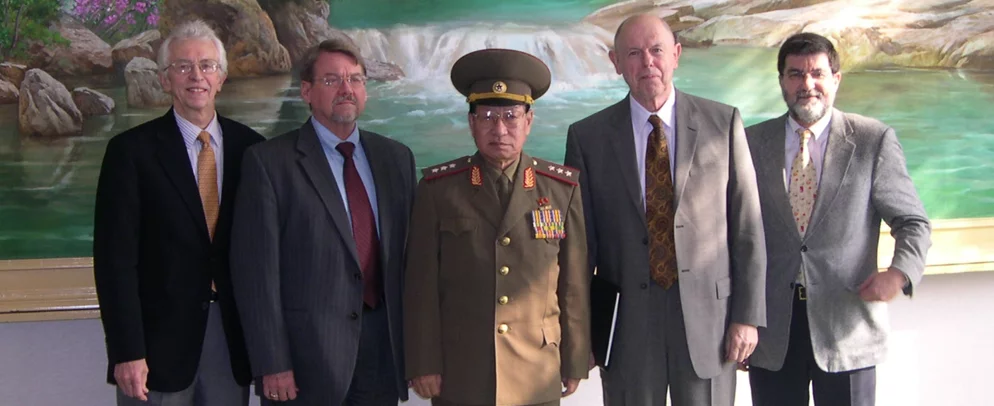
Dates: October 31 – November 4, 2006
The 2006 visit came in the wake of the nuclear test of 9 October 2006 that proclaimed the nuclear status of DPRK to the world. Hecker and the Stanford team members came ready to explore both technical questions about the test and the political implications of this critical step in the North’s nuclear program.
Stanford delegation: John Lewis, Siegfried Hecker, Robert Carlin, and Charles “Jack” Pritchard.
At the start of the visit, Ambassador Ri Gun, the Foreign Affairs Ministry host, indicated that Pyongyang wanted to “let the American public know that the people in the DPRK are full of confidence and pride and we are marching forward”.
Notes by John Lewis (with Hecker input) of meeting with Ambassador Ri Gun (some of the Korean names are spelled differently in the memo than in the book – Li Gun instead of Ri Gun and Ms. Choi Son Hyi instead of Choe Son Hui), notes.
“Mammoth army-people rally hails successful nuclear test“, Pyongyang Times, October 28, 2006
There was no visit to Yongbyon on this trip. Hecker and Stanford team members were hoping to determine the status and future steps of the DPRK nuclear program in discussions with Yongbyon Director Ri Hong Sop and other high officials.
Meeting with Director Ri Hong Sop, notes.
In his trip report, Hecker wrote: “We know very little about the DPRK nuclear stockpile and the nation’s nuclear strategy. DPRK officials stated the role of their nuclear weapons is to deter the United States and defend the sovereignty of their state. <…> They stated that DPRK’ s commitment to denuclearize remains unchanged in spite of their nuclear test, but it will require the United States to stop threatening the DPRK state. <…>
Yet, my general impression is that the hurdles to convincing the DPRK to give up its nuclear weapons have increased substantially <…> . It is essential for the United States to demonstrably address DPRK’s security before there is any hope of denuclearization.
Siegfried Hecker, Report on the North Korean Nuclear Program.
2006: Discussions on post-test developments
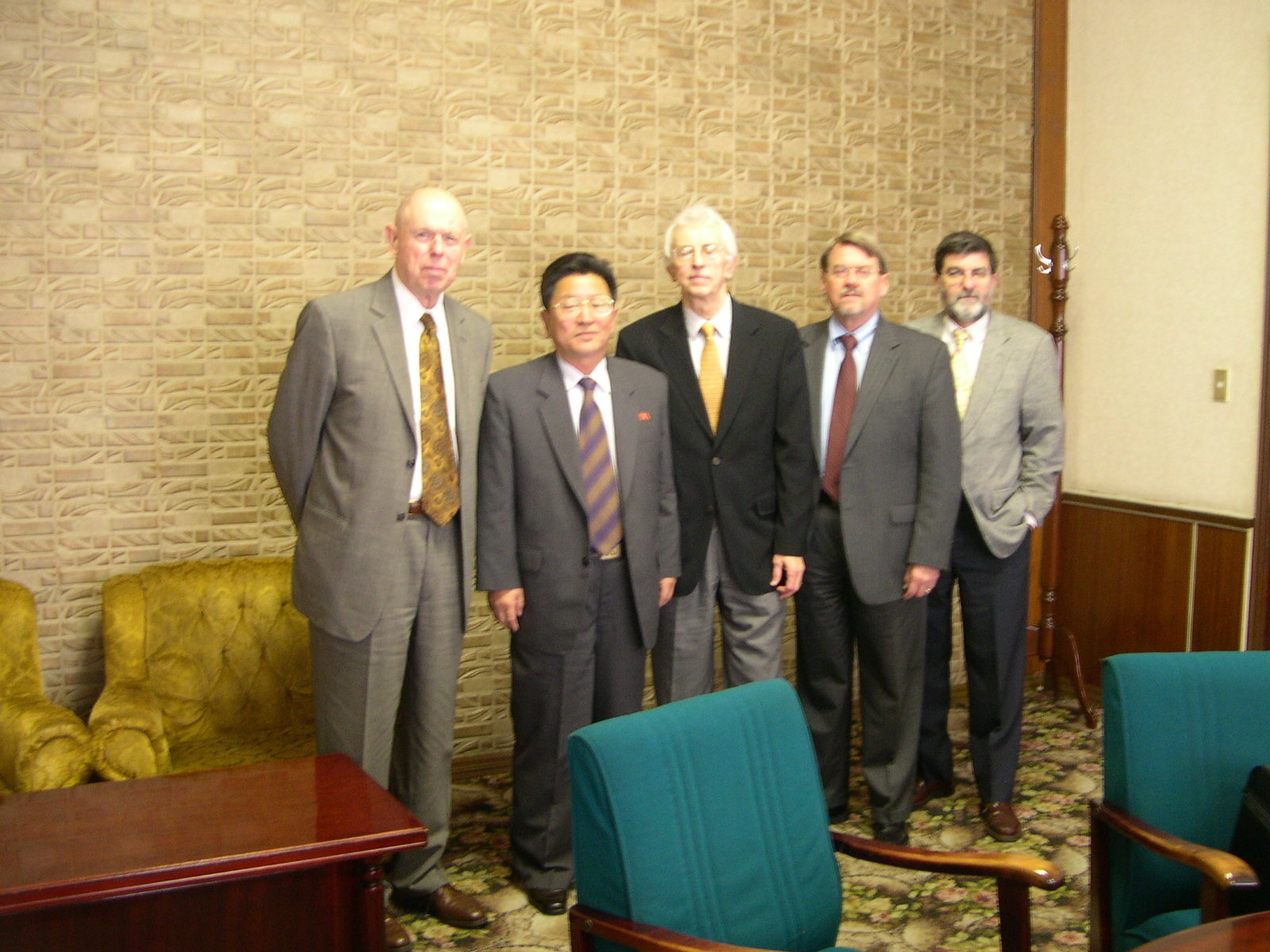
Meeting with Director Ri Hong Sop was “informative” but he was not authorized to discuss the recent nuclear test.
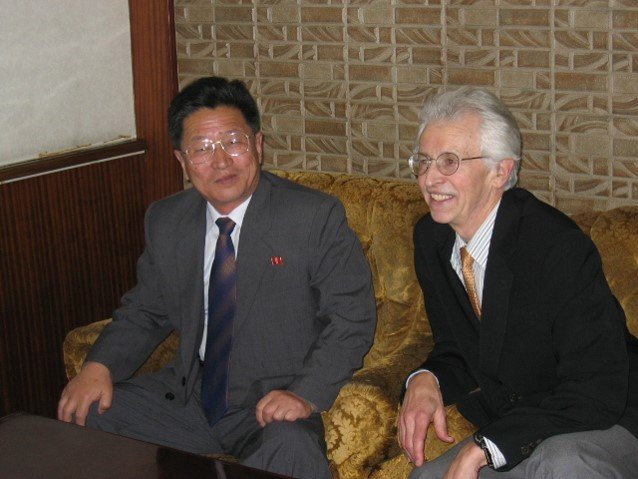
Hecker talks with Yongbyon Director Ri Hong Sop a few weeks after the first North Korean nuclear test. Koryo Hotel, Pyongyang.
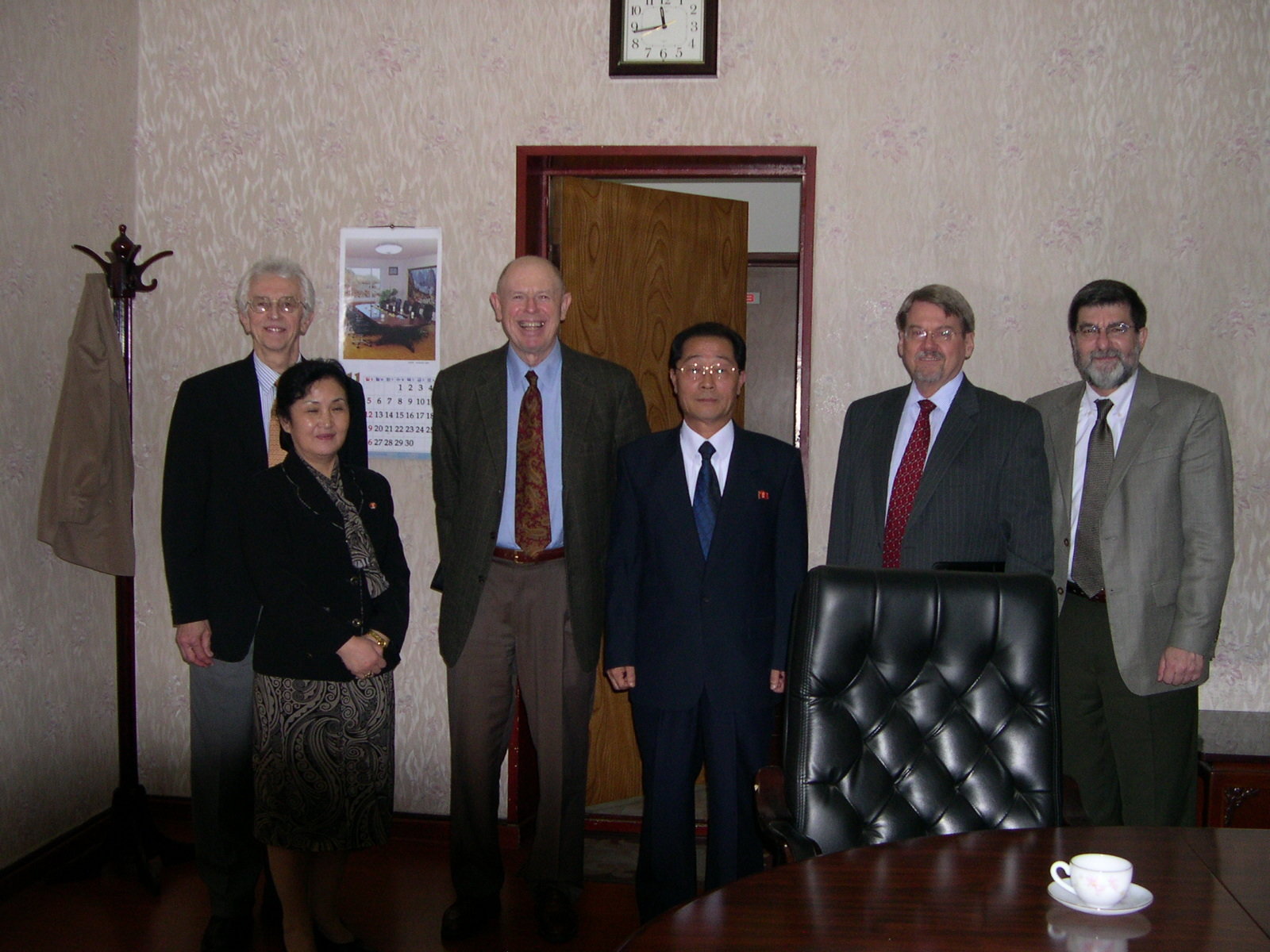
Meeting at the Peoples’ National Economic University. Pyongyang, November 2006.
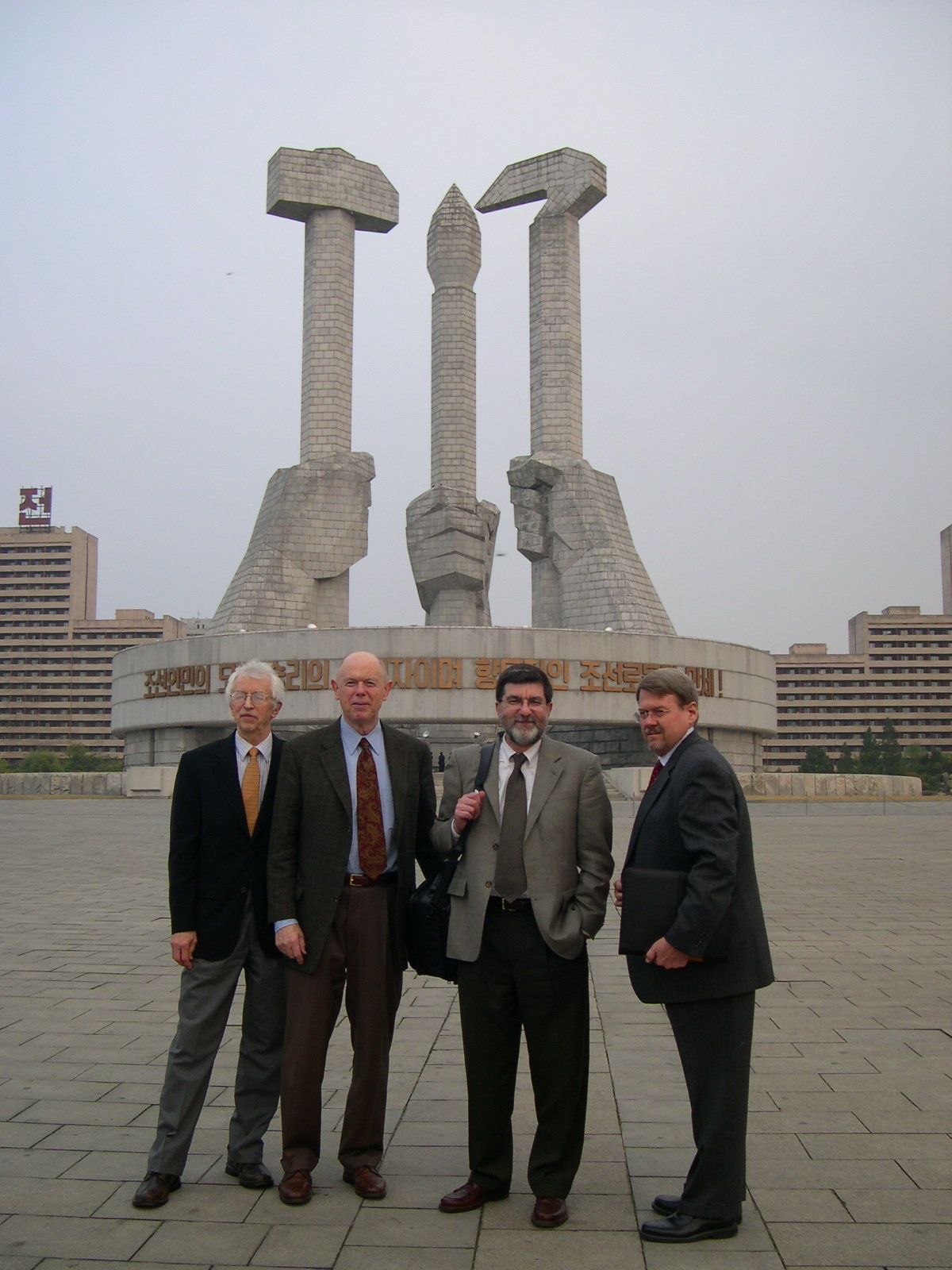
Hecker (left), Lewis, Carlin, and Pritchard at a courtesy stop to visit the Korean Workers Party Foundation Monument in Pyongyang.
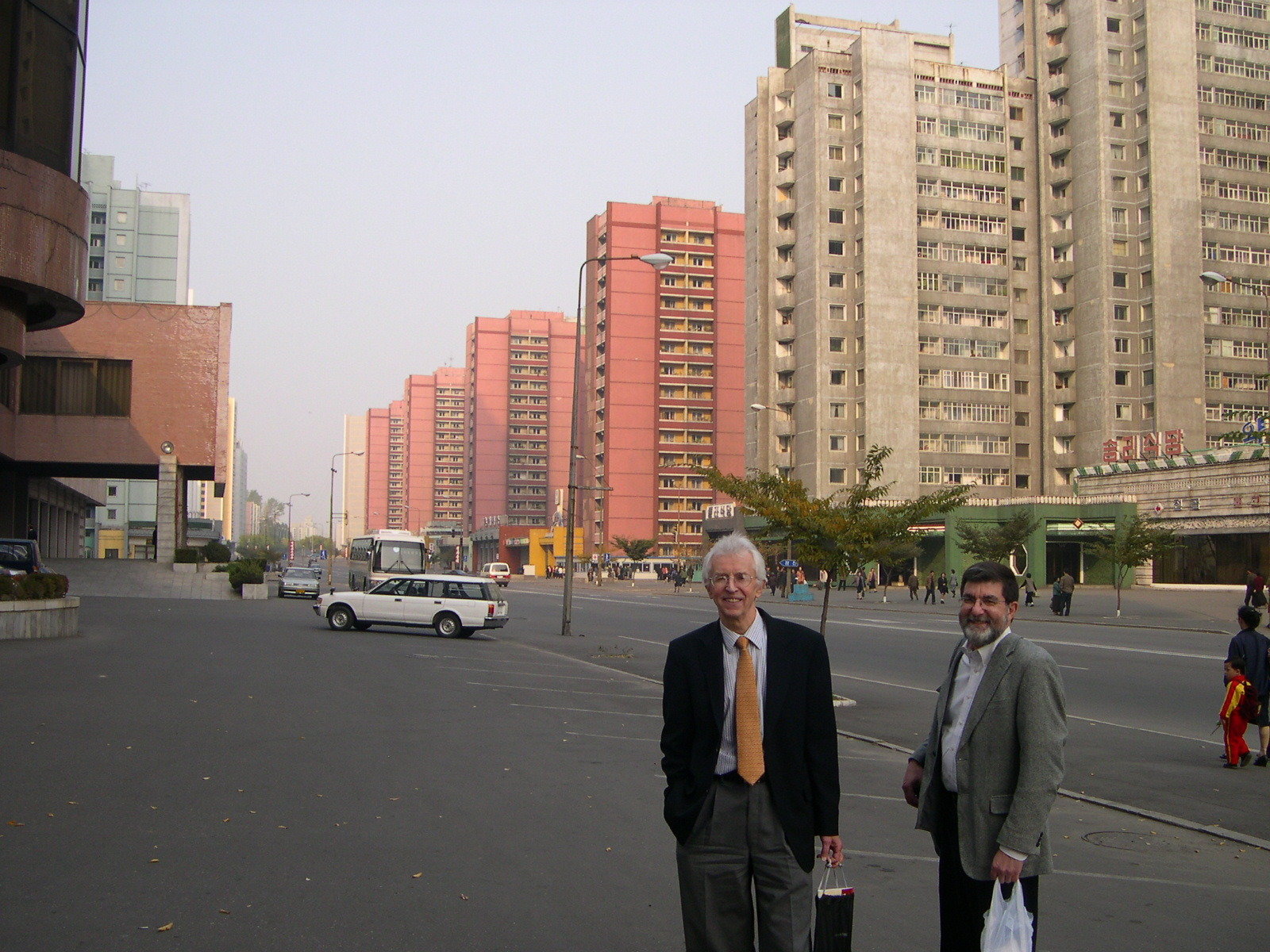
Hecker and Carlin after stamp store visit. Hecker was able to buy stamps celebrating the 1998 satellite launch.
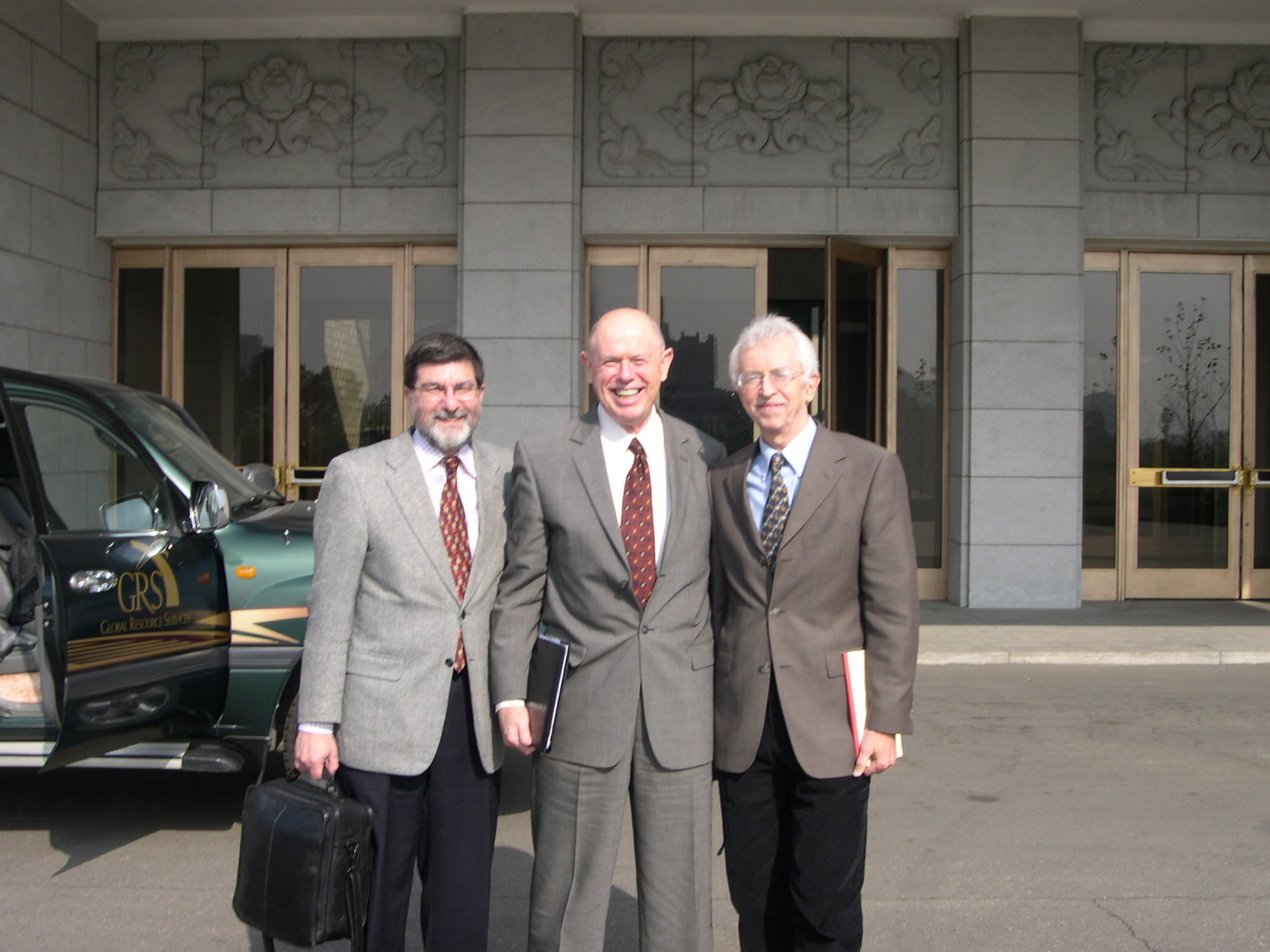
Carlin (left), Lewis, and Hecker ready for a packed day of visits in Pyongyang.
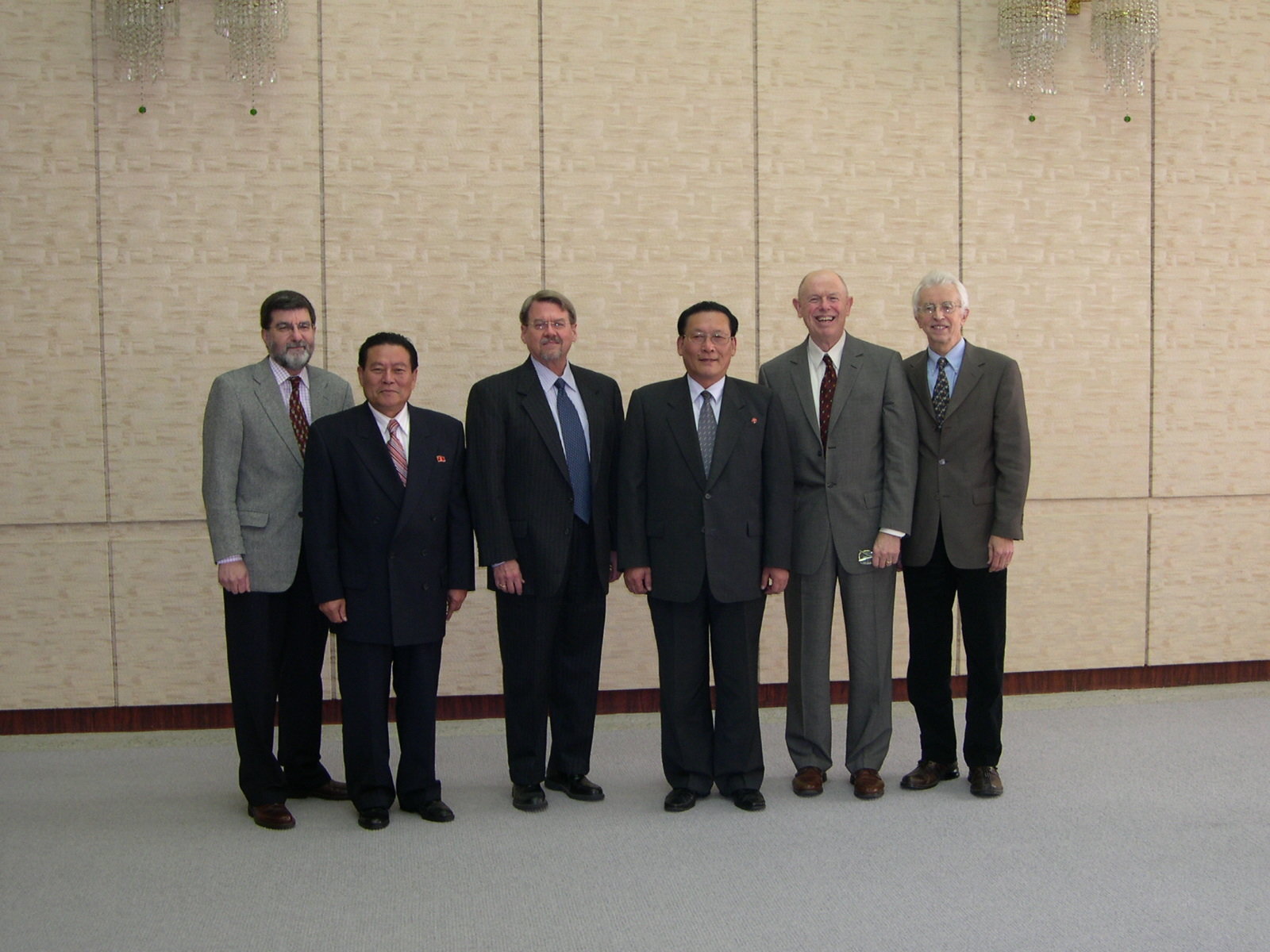
Traditional courtesy visit at North Korea’s Supreme Peoples Assembly.

At the meeting with North Korea’s Ministry of Education, Lewis explored collaboration with Stanford University. “Yes, we are interested, but it will depend on our governments.”
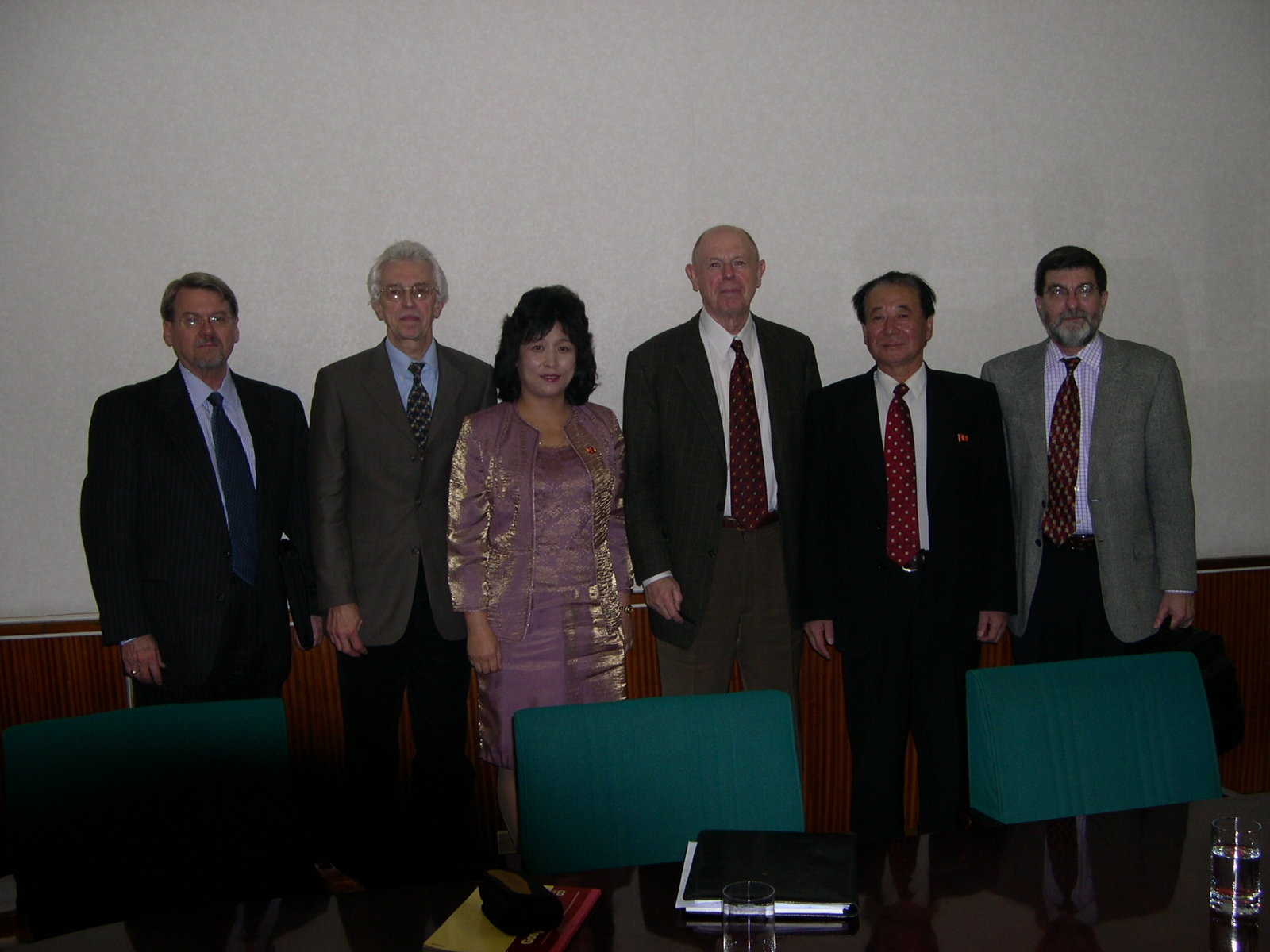
Hecker found the visit with the Ministry of Education enlightening. Photo taken after the discussion.
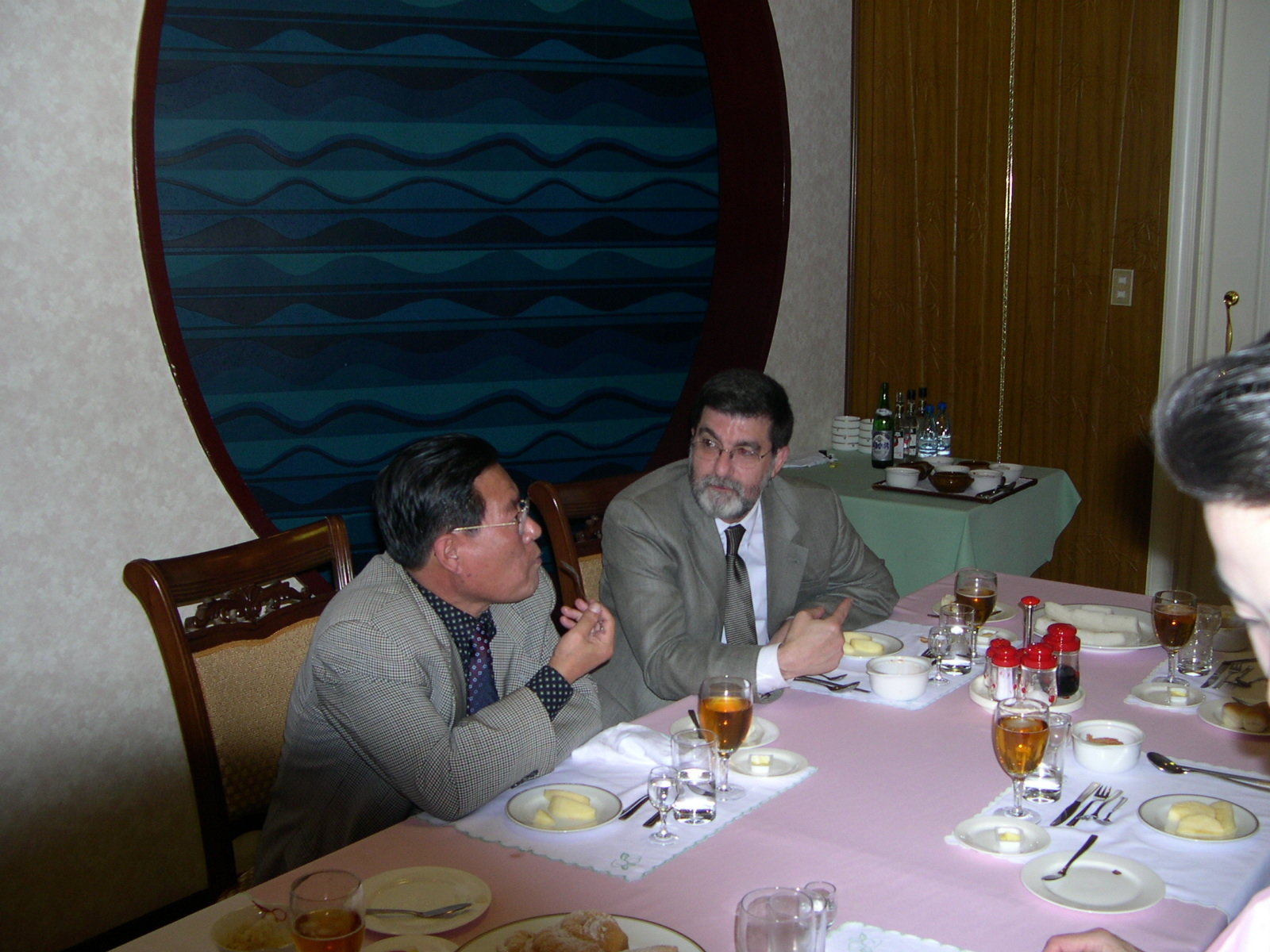
Ambassador Ri Gun (left) and Carlin hold a conversation over dinner. Koryo Hotel, Pyongyang.

A lighter dinner-time moment of Amb. Ri Gun jesting with Bob Carlin (left) and Jack Pritchard (right).
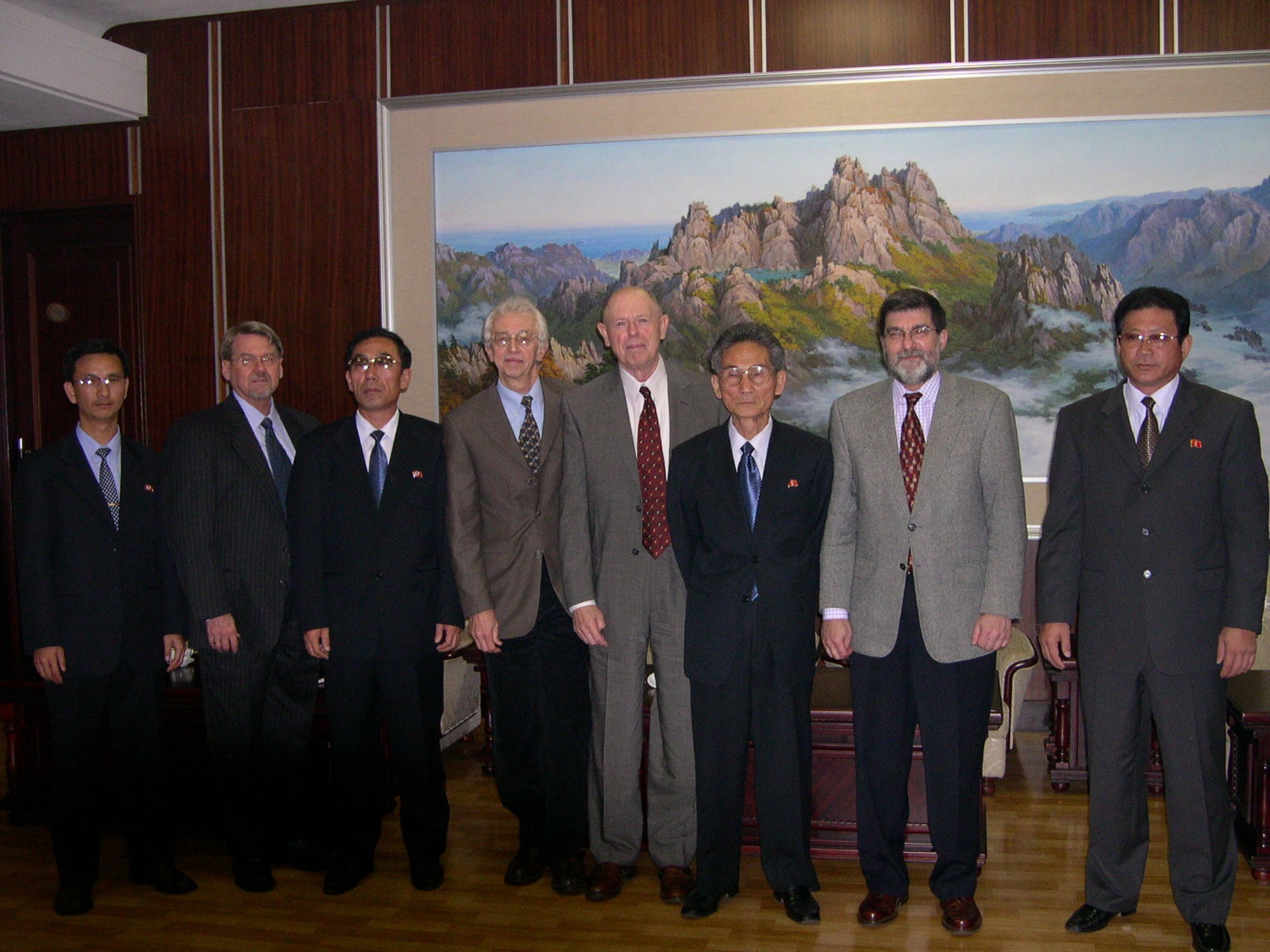
Visit with representatives of the Committee on the Promotion of International Trade.
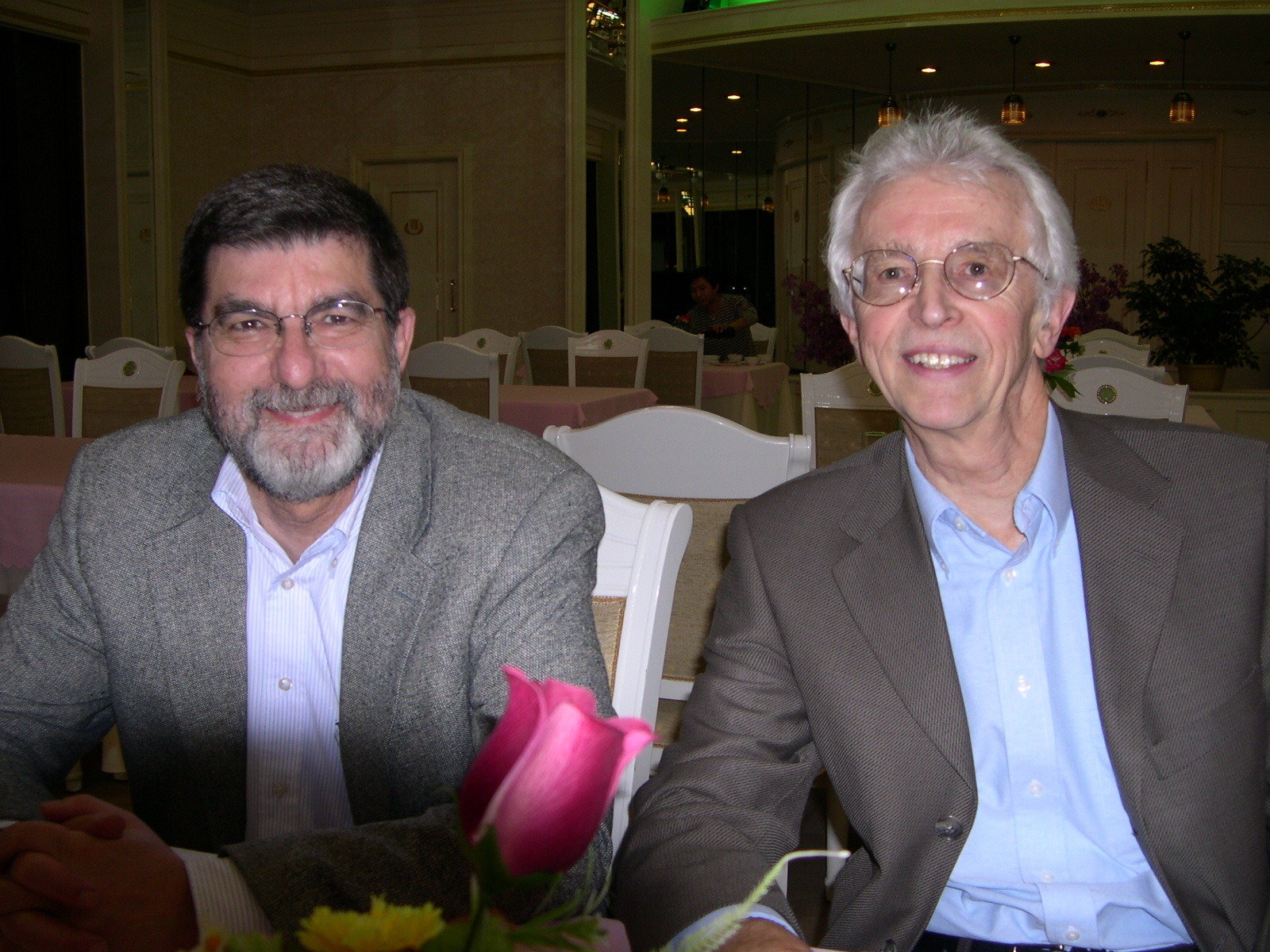
Carlin (left) and Hecker smile while resting at the Koryo Hotel in the end of a long day.
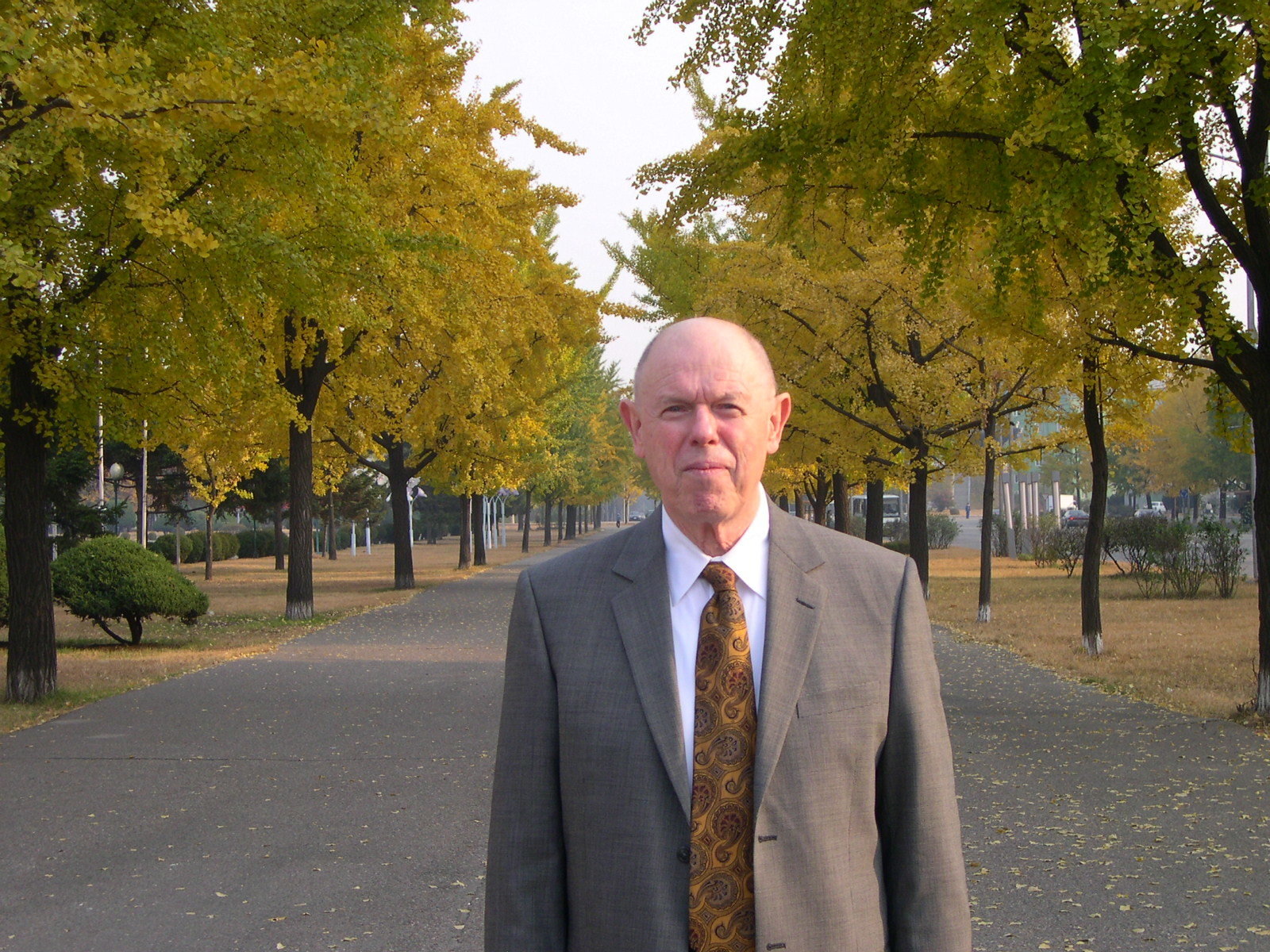
John Lewis on the way to next meeting.

Lewis (left) and Pritchard in Koryo Hotel dining room, after the day full of visit.
2006: Everyday life in Pyongyang
The rather light nuclear agenda during this trip allowed John Lewis to schedule more visits as part of his unyielding desire to understand North Korea from the perspectives of the economy, public health, culture and education. Lewis explored every opportunity to see if the various organizations in the North were interested in cooperation with the U.S. and with Stanford University, in particular.

Morning view of Pyongyang residential buildings out of the Koryo Hotel window on 17th floor.
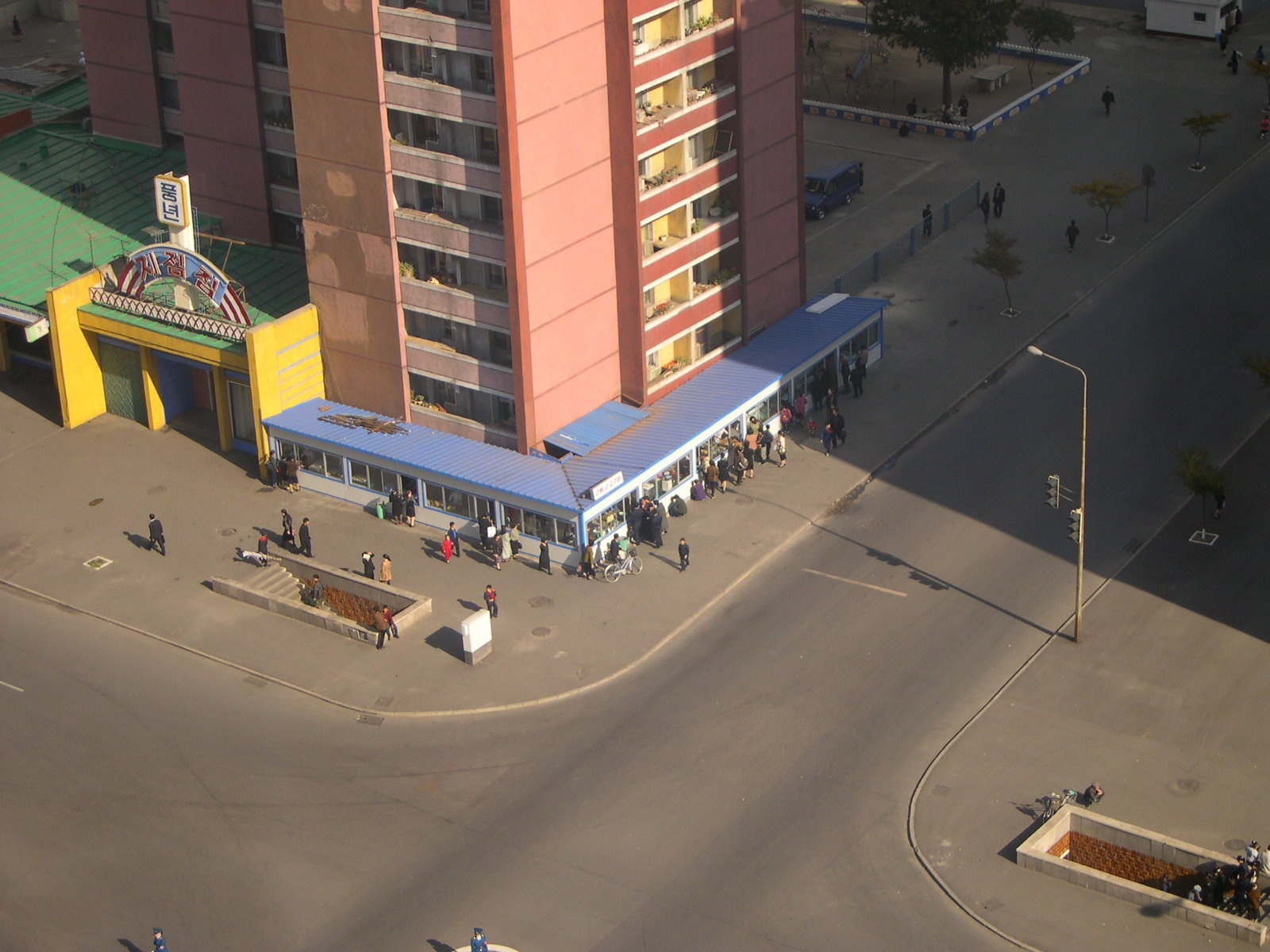
View of a street corner kiosk from the hotel window high above.
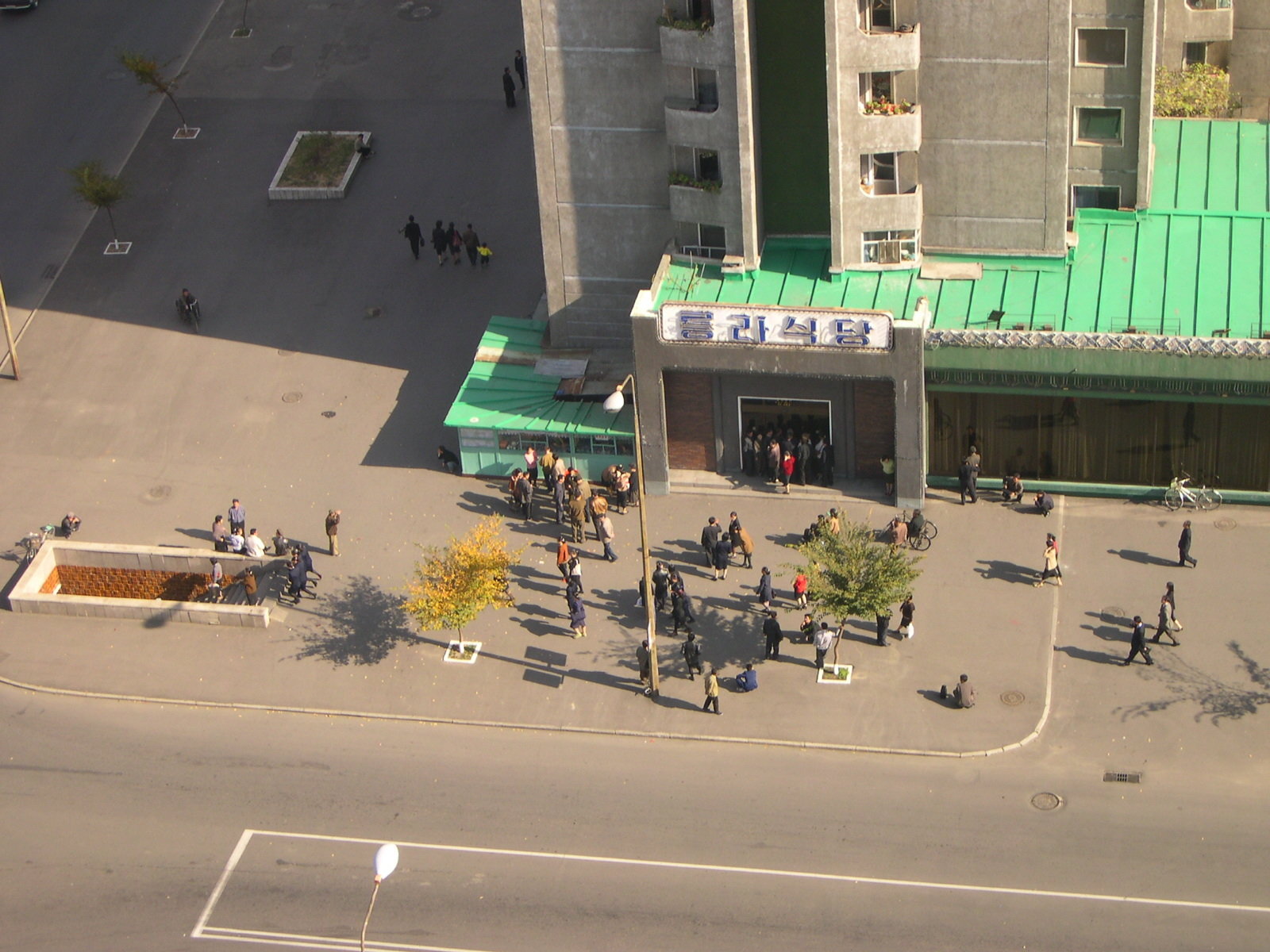
Morning in North Korea’s capital. People waiting for a store to open.
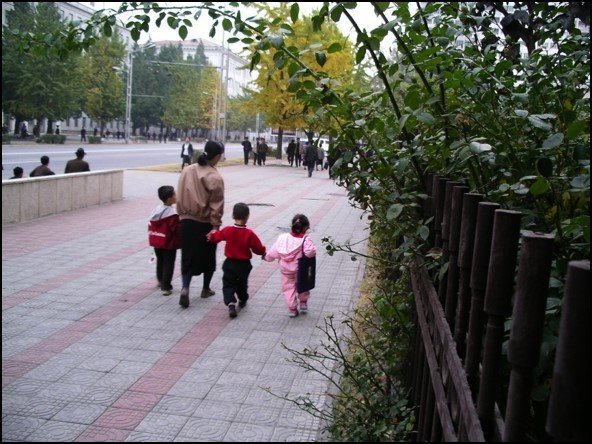
Colorful outfits on children heading from school.
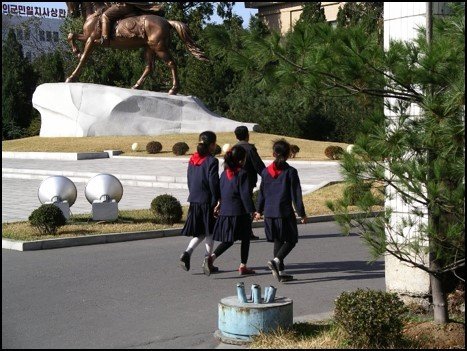
Girls heading home from school – blue uniforms and red bandana.

Common sight of people waiting for buses on a Pyongyang street.
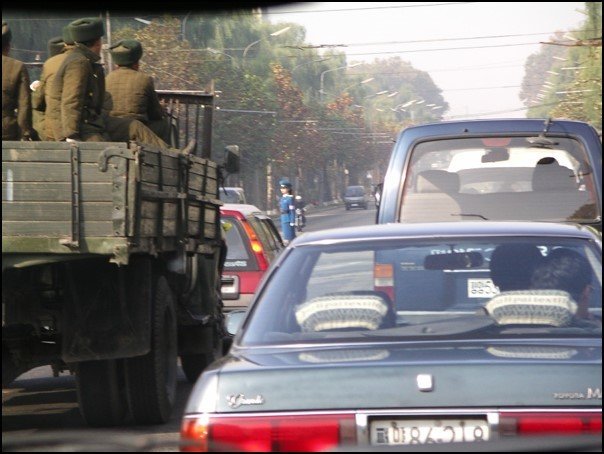
Common sight on a Pyongyang street. A woman traffic controller is stationed at the intersection.
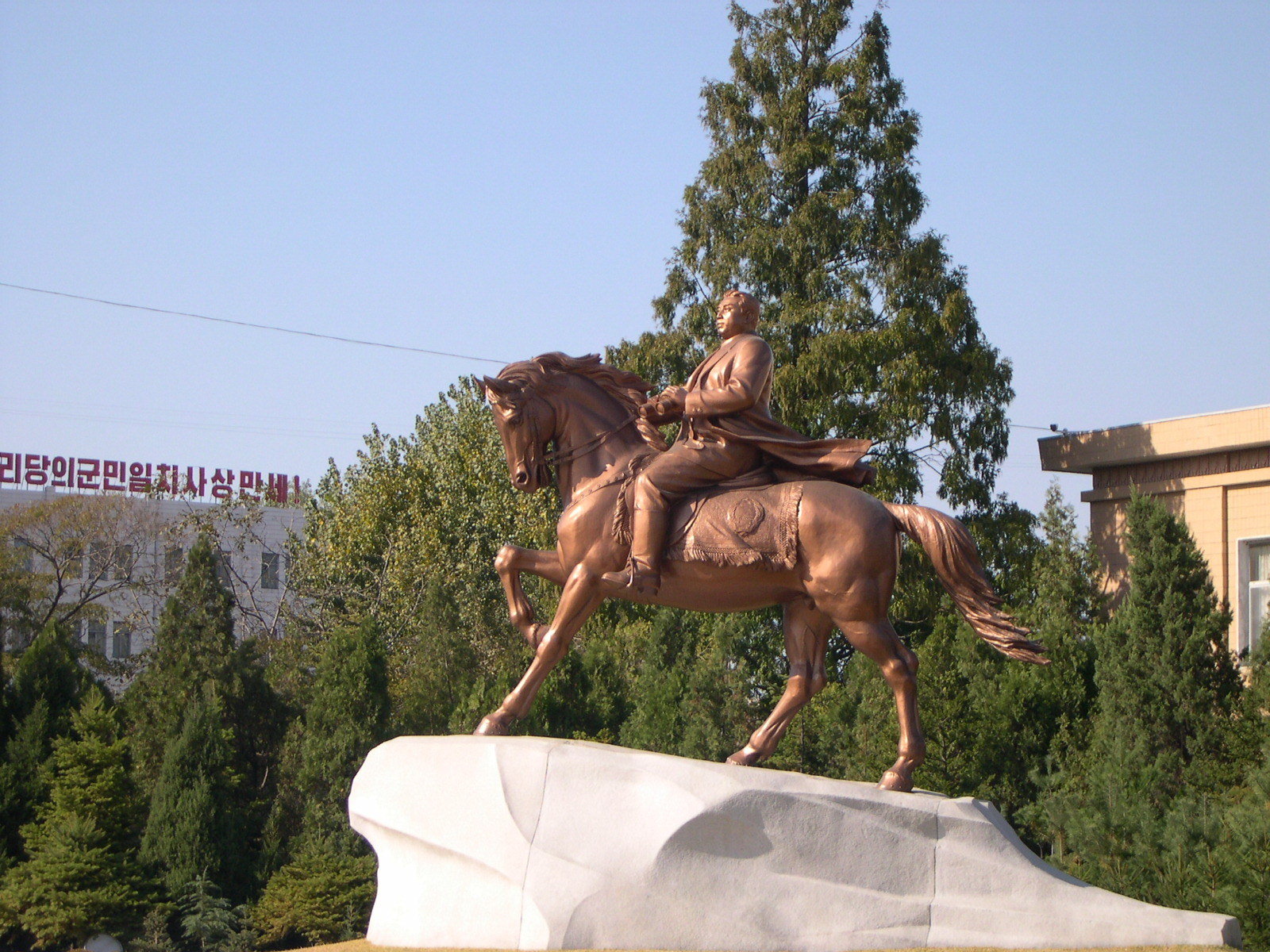
Bronze statue of Kim Il Sung on horseback.
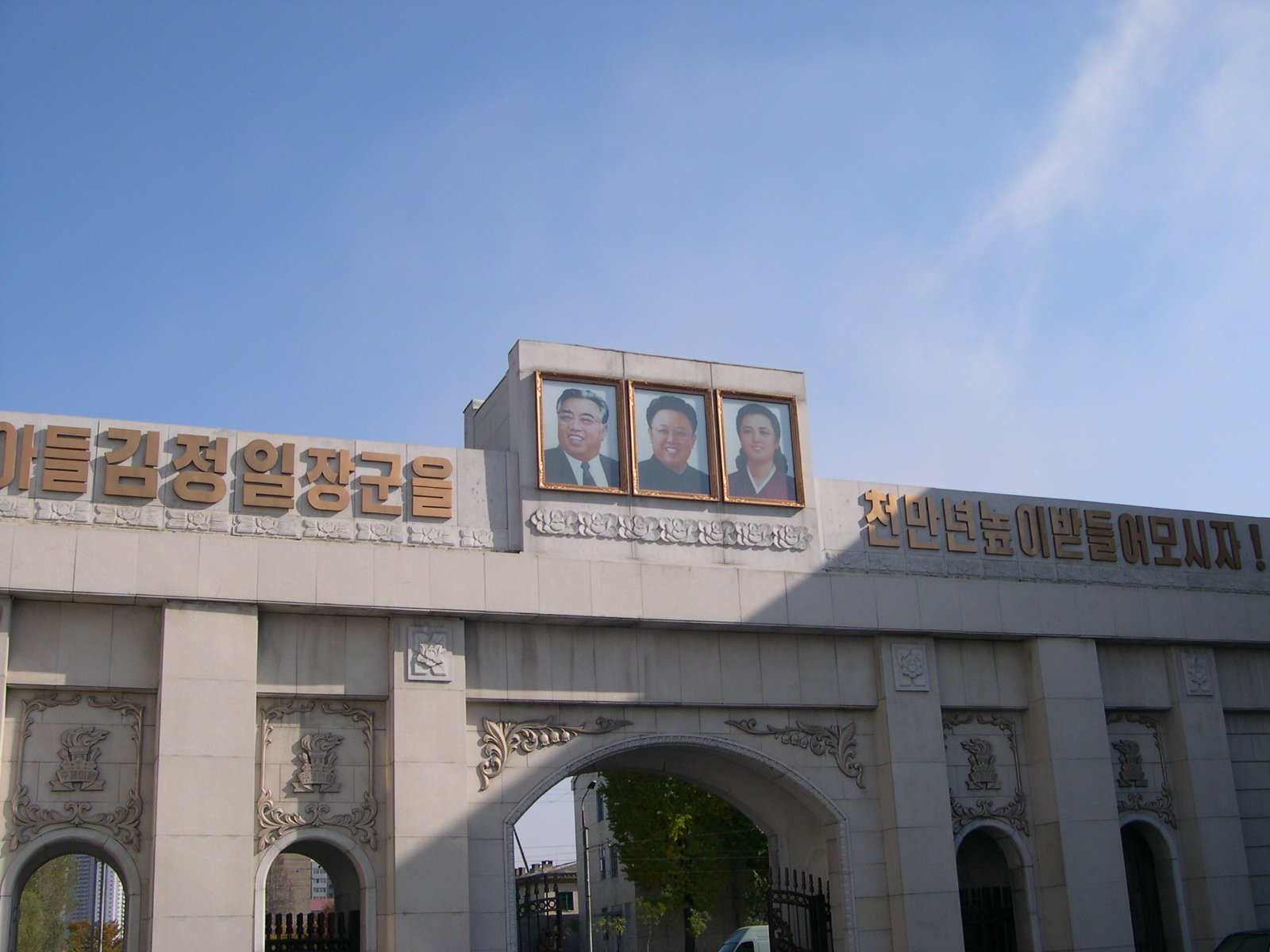
Gateway entry to an industrial site with portraits of Kim Il Sung, Kim Jong Il, and Kim Jong Suk (Kim Il Sung’s wife and Kim Jong Il’s mother).
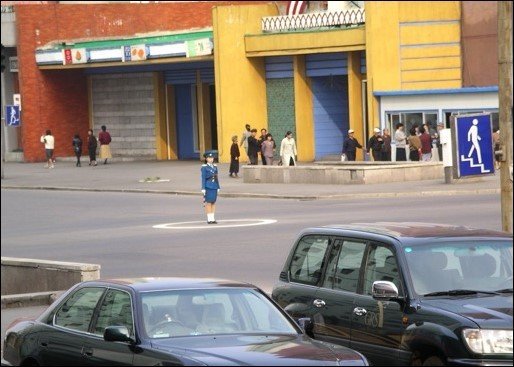
Pyongyang traffic control.
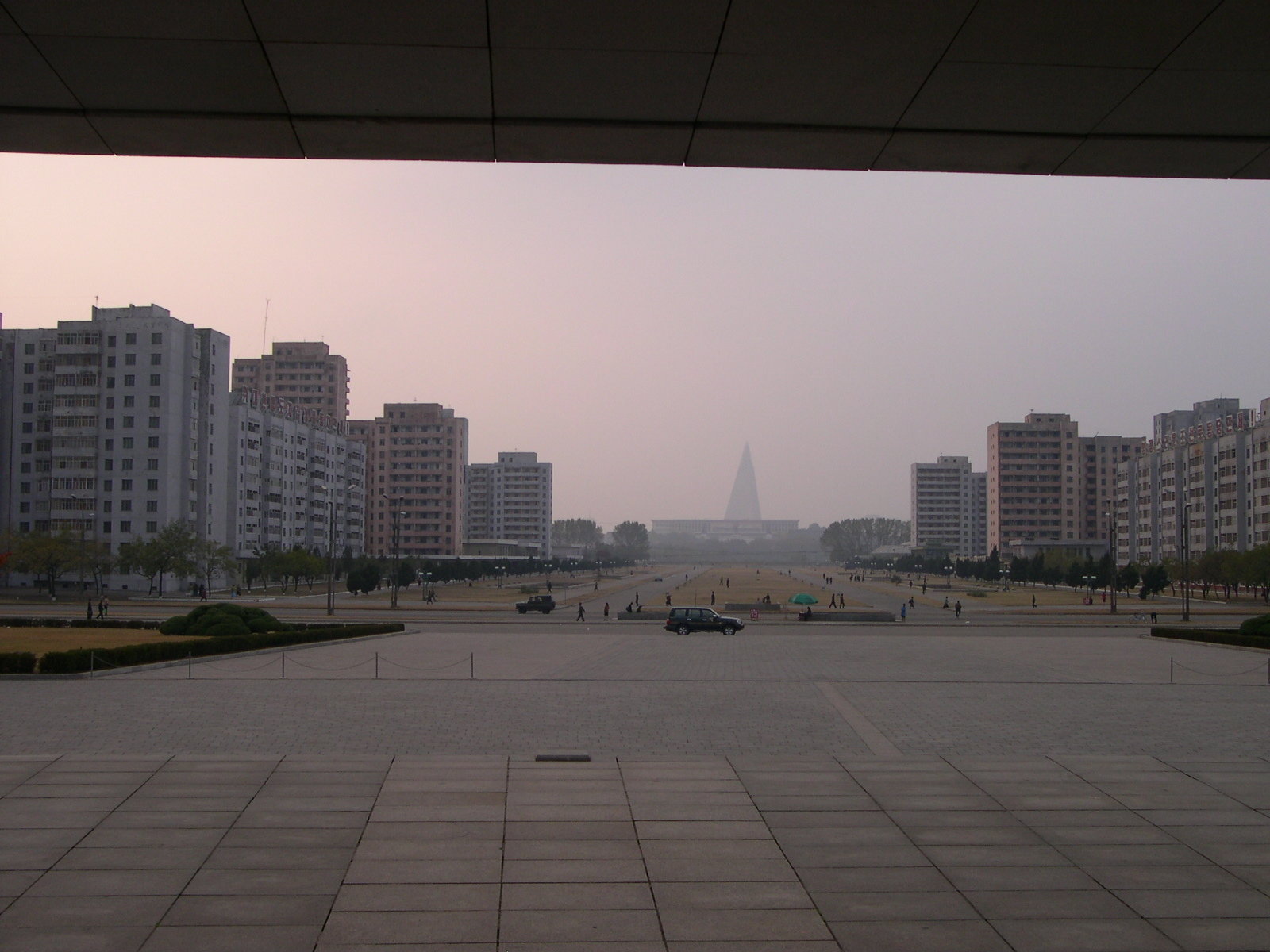
Pyongyang city-scape with a giant tower of Ryugyong Hotel, the unfinished 105-story pyramid-shaped skyscraper.
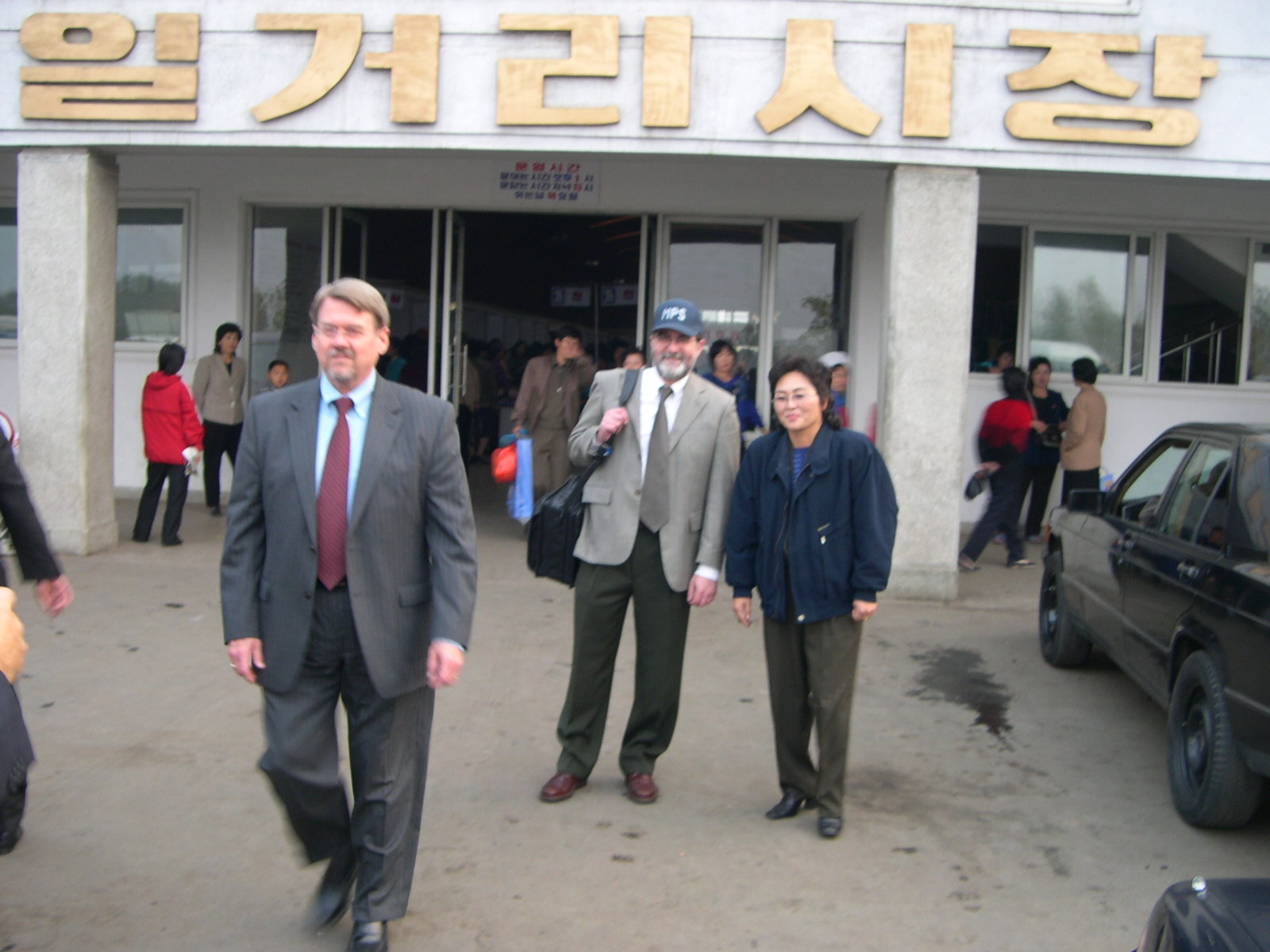
Pritchard (left) and Carlin (right of center) at Tong Il Street Market.
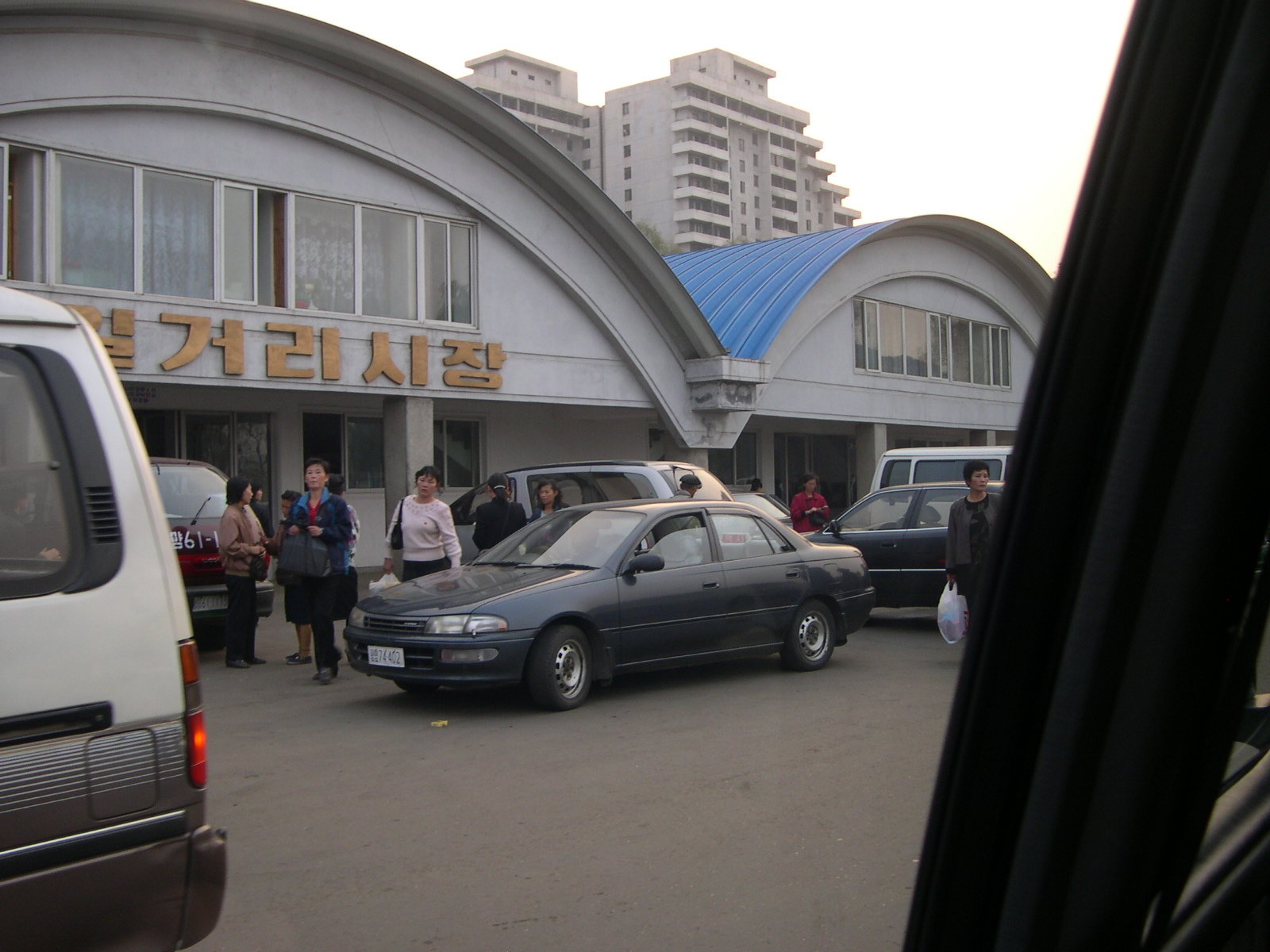
The parking lot at the Tong Il Market was jammed with vehicles, some of them privately owned (with yellow license plates).

Hecker (front) and Carlin (further back) entering a subway station.
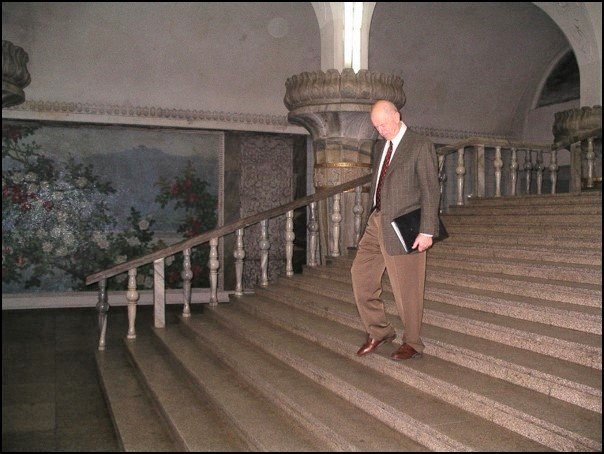
John Lewis in Pyongyang subway.
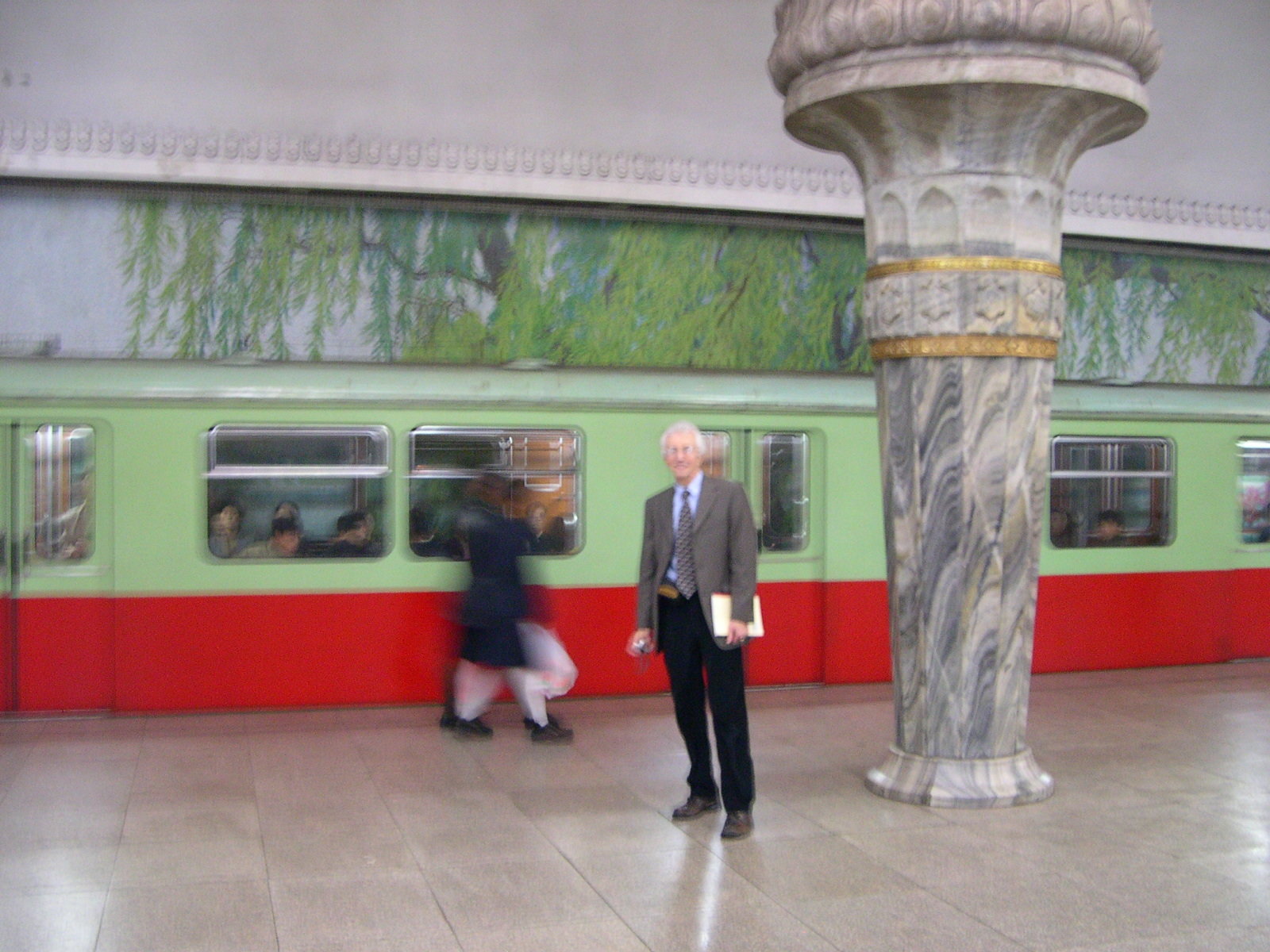
Hecker in Pyongyang subway.

Biology lab in Middle School N1 in Pyongyang, housed in a big six-story building with 1500 students.
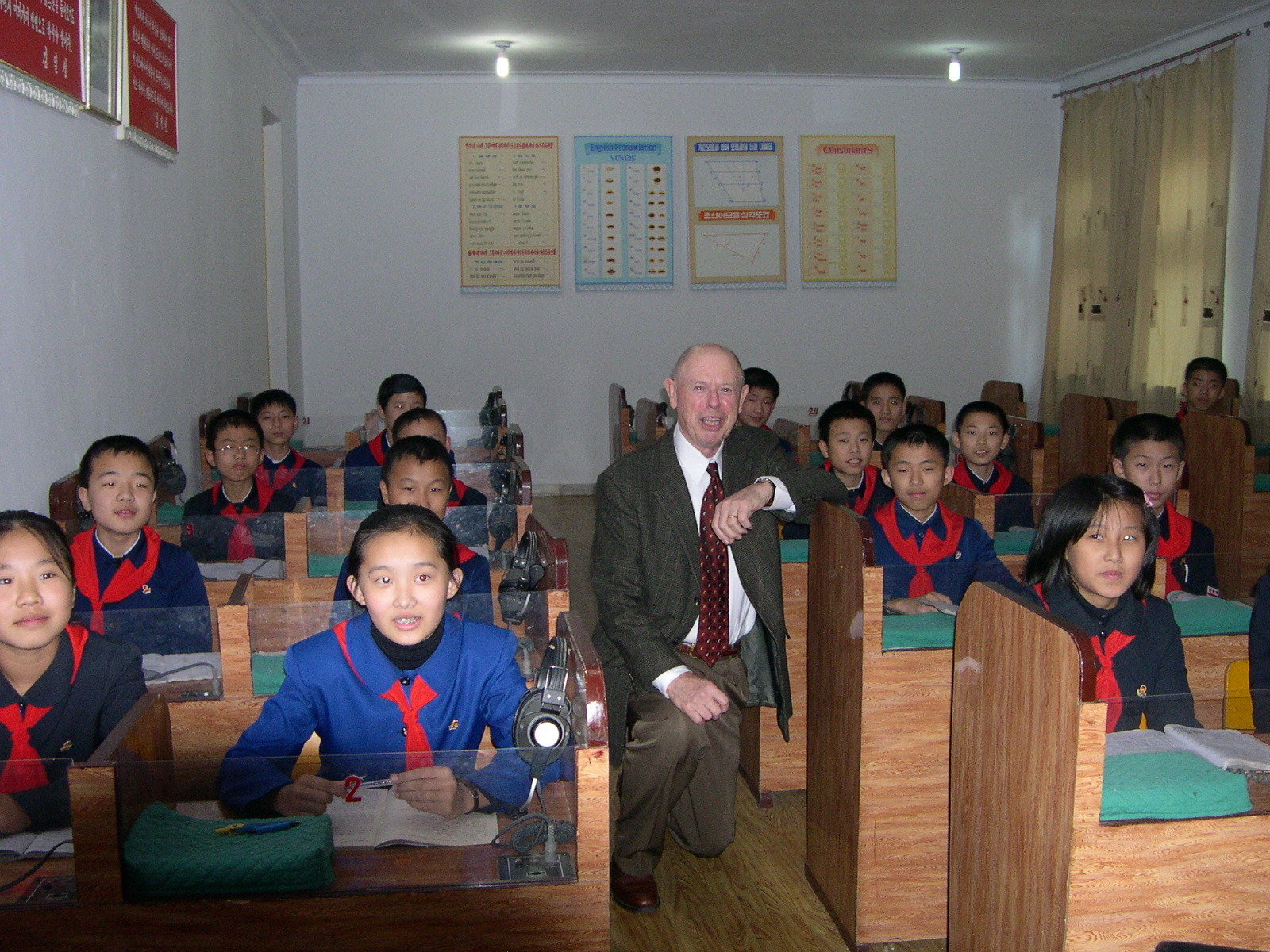
Lewis in classroom during visit to Middle School N1 in Pyongyang.
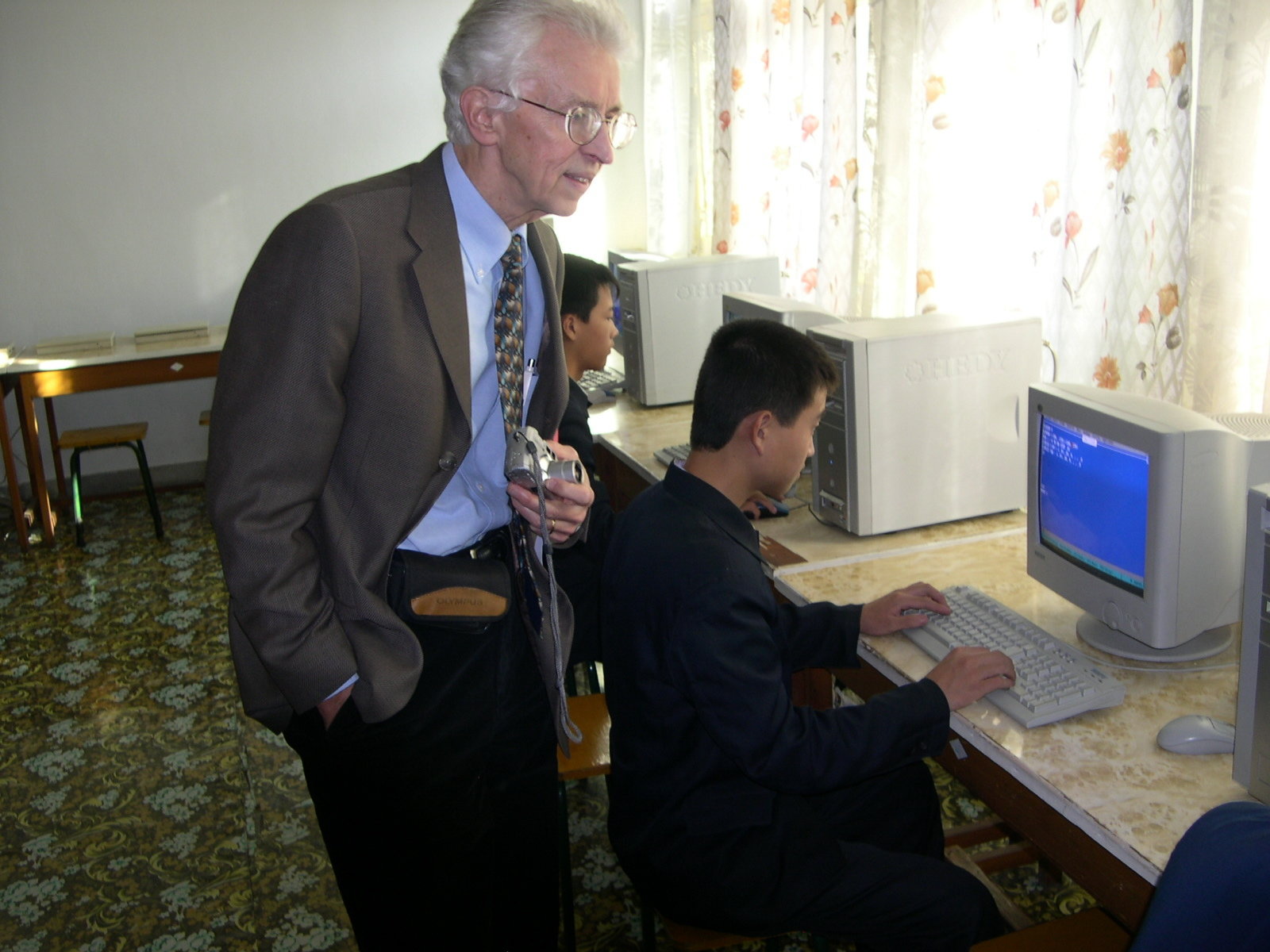
Hecker in computer lab.
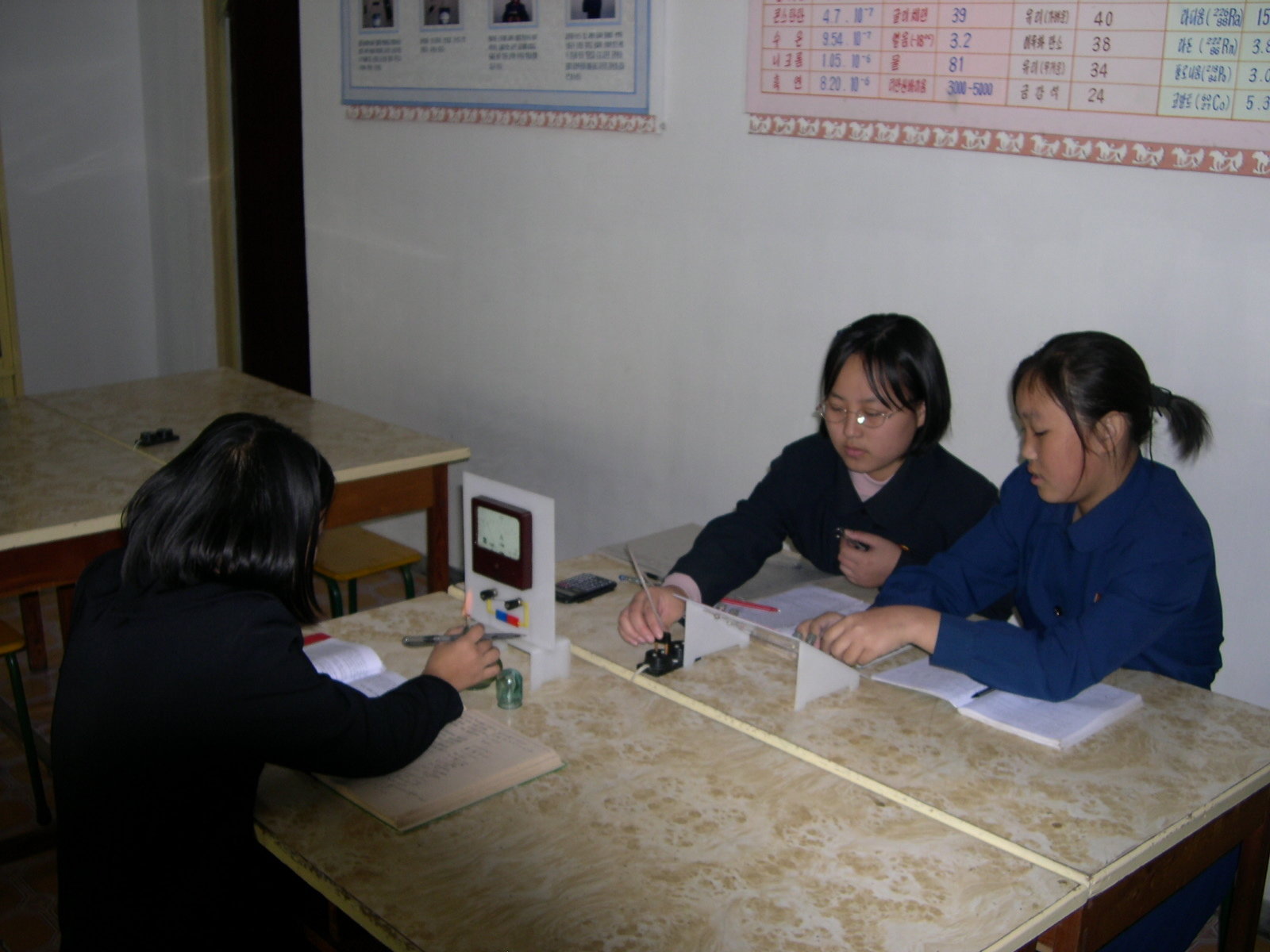
Girls conducting tabletop physics experiment in Pyongyang school.
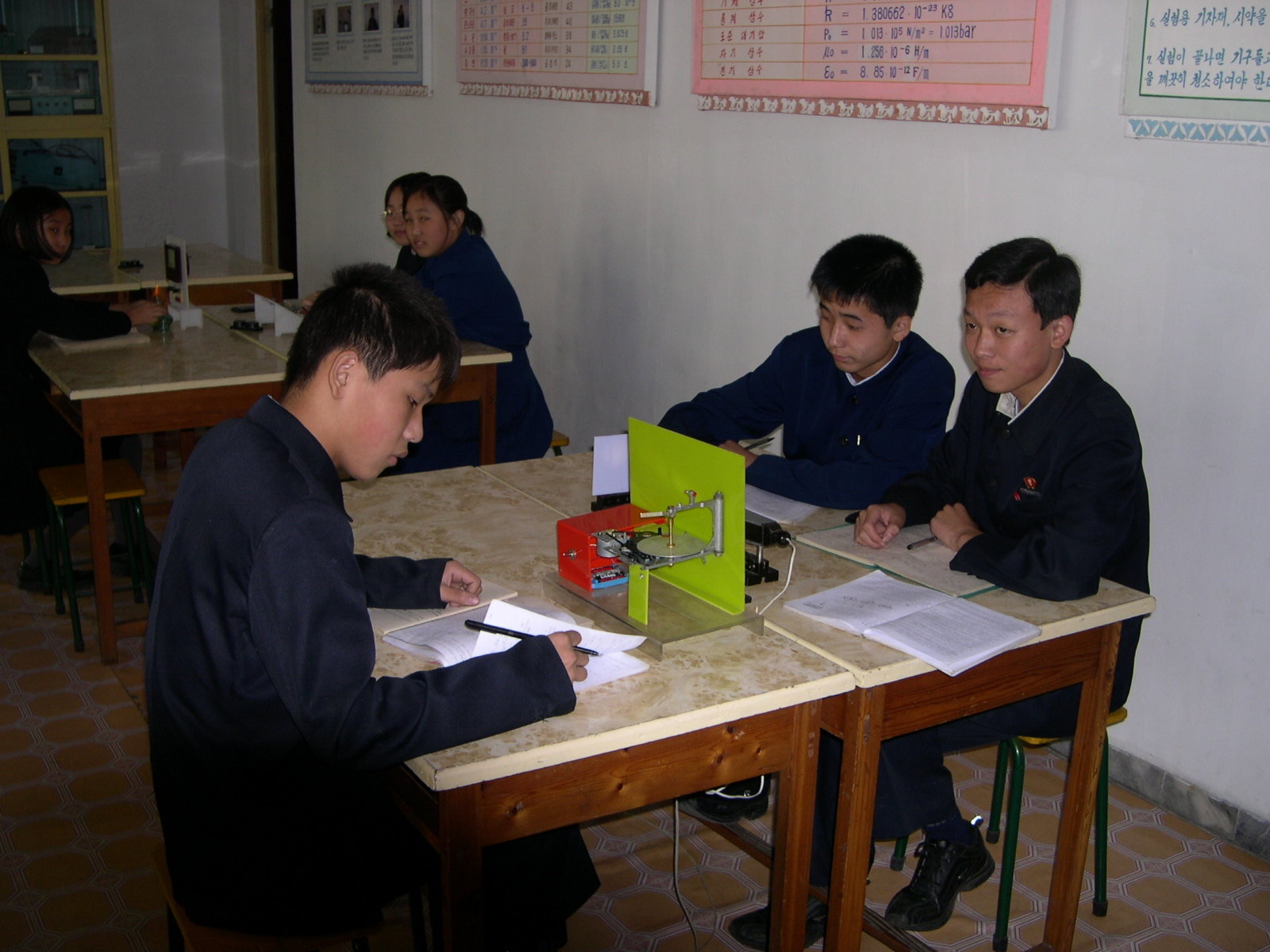
Next desk, another tabletop experimental setup.
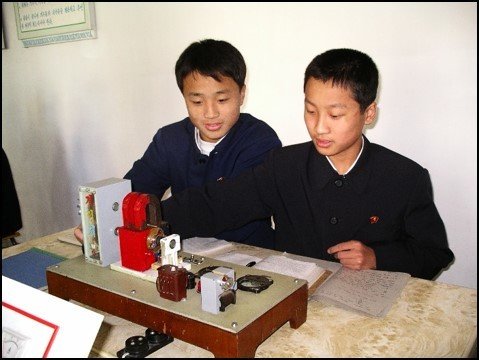
Electricity and magnetism experiments.
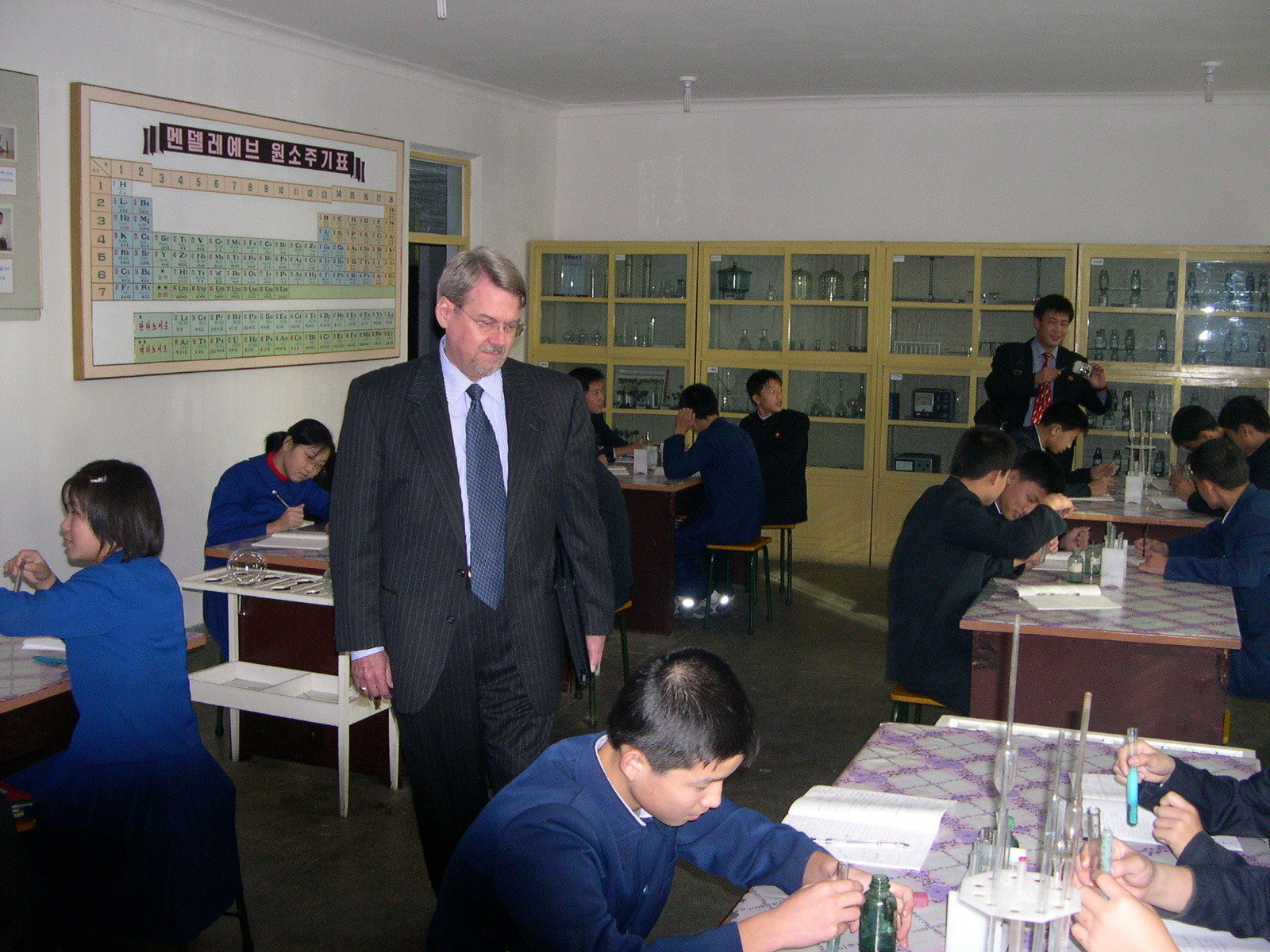
Pritchard in chemistry class.
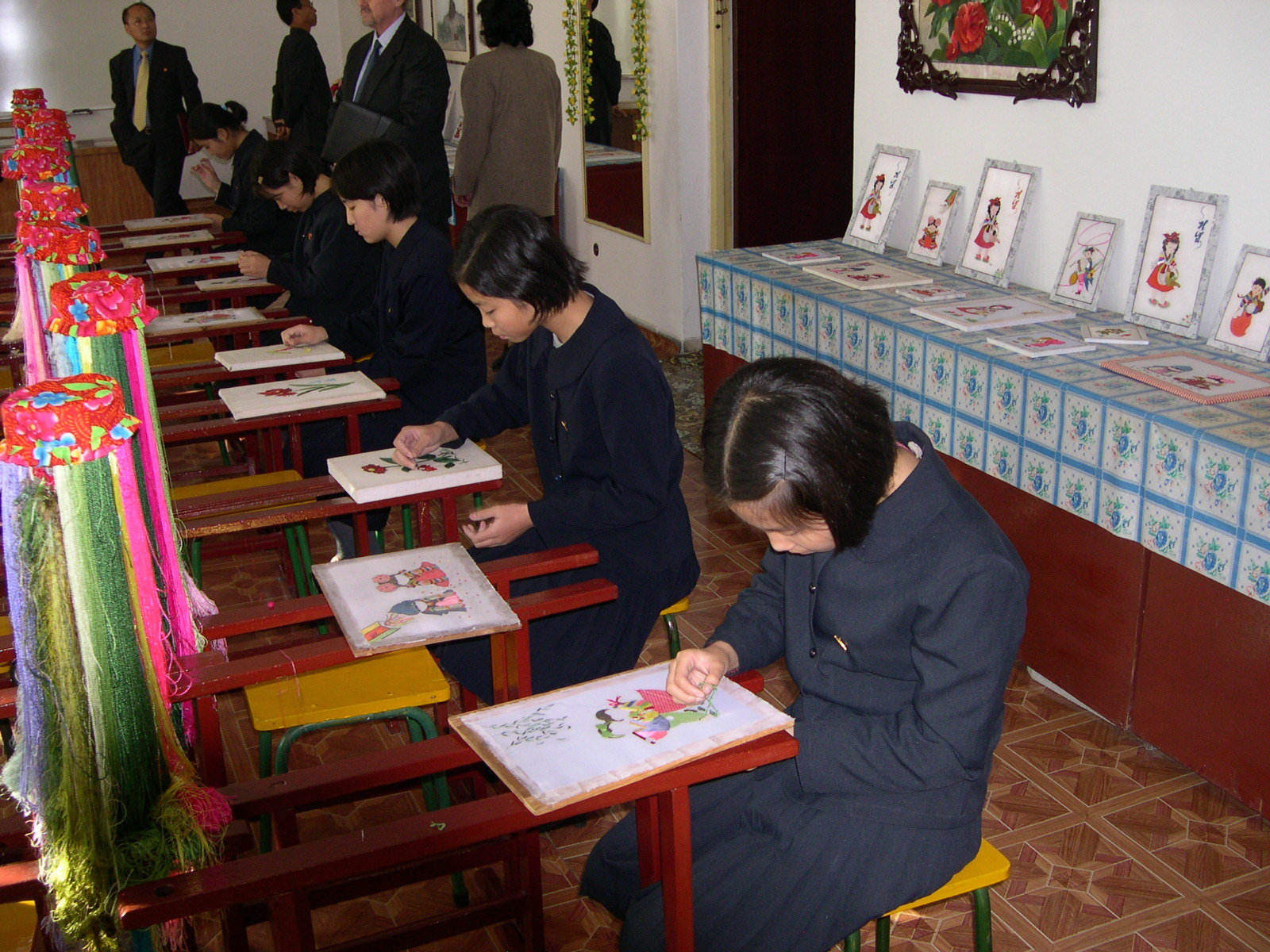
Embroidery class.
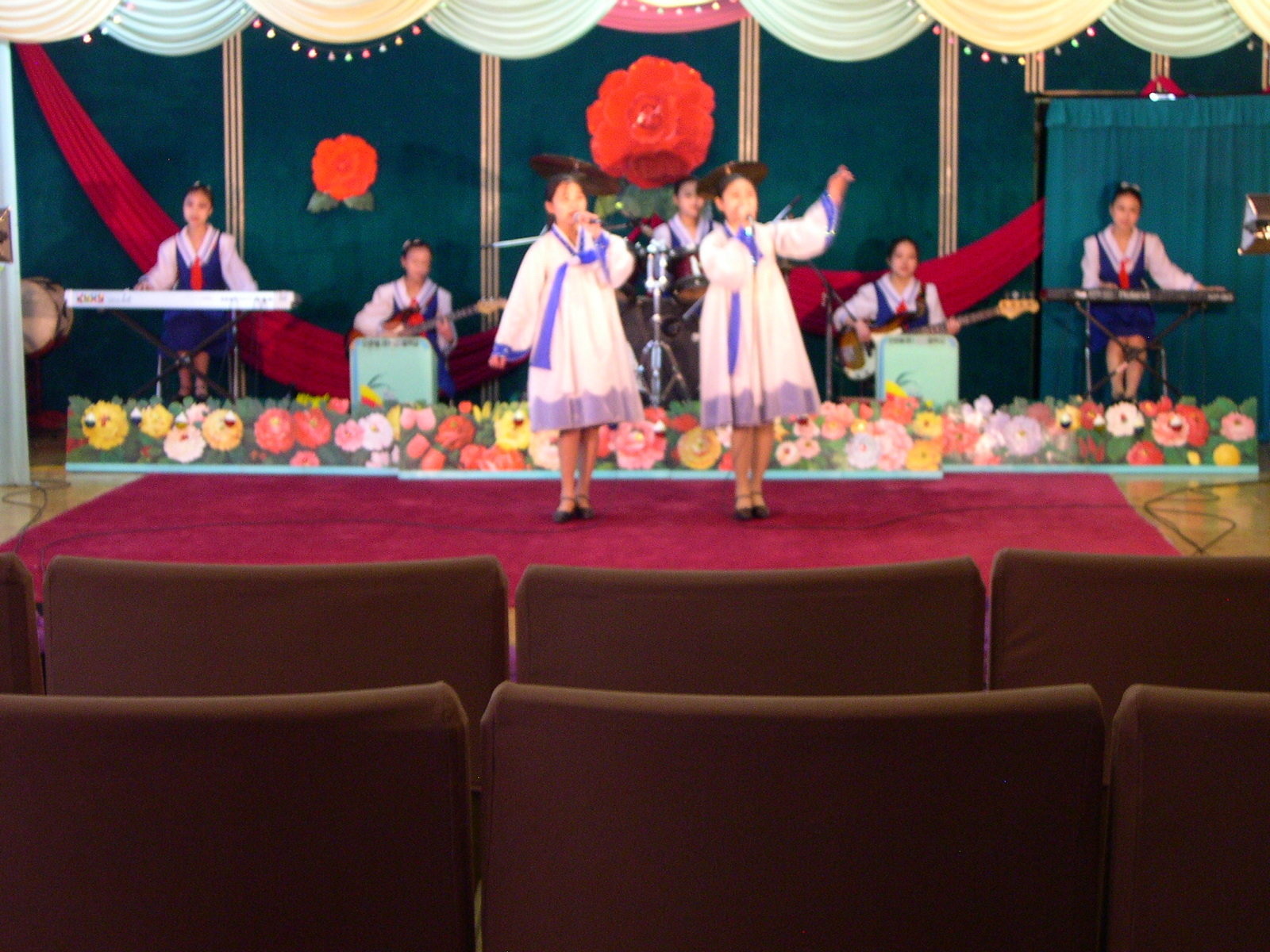
A music performance at the end of the visit to Pyongyang Middle School N 1.
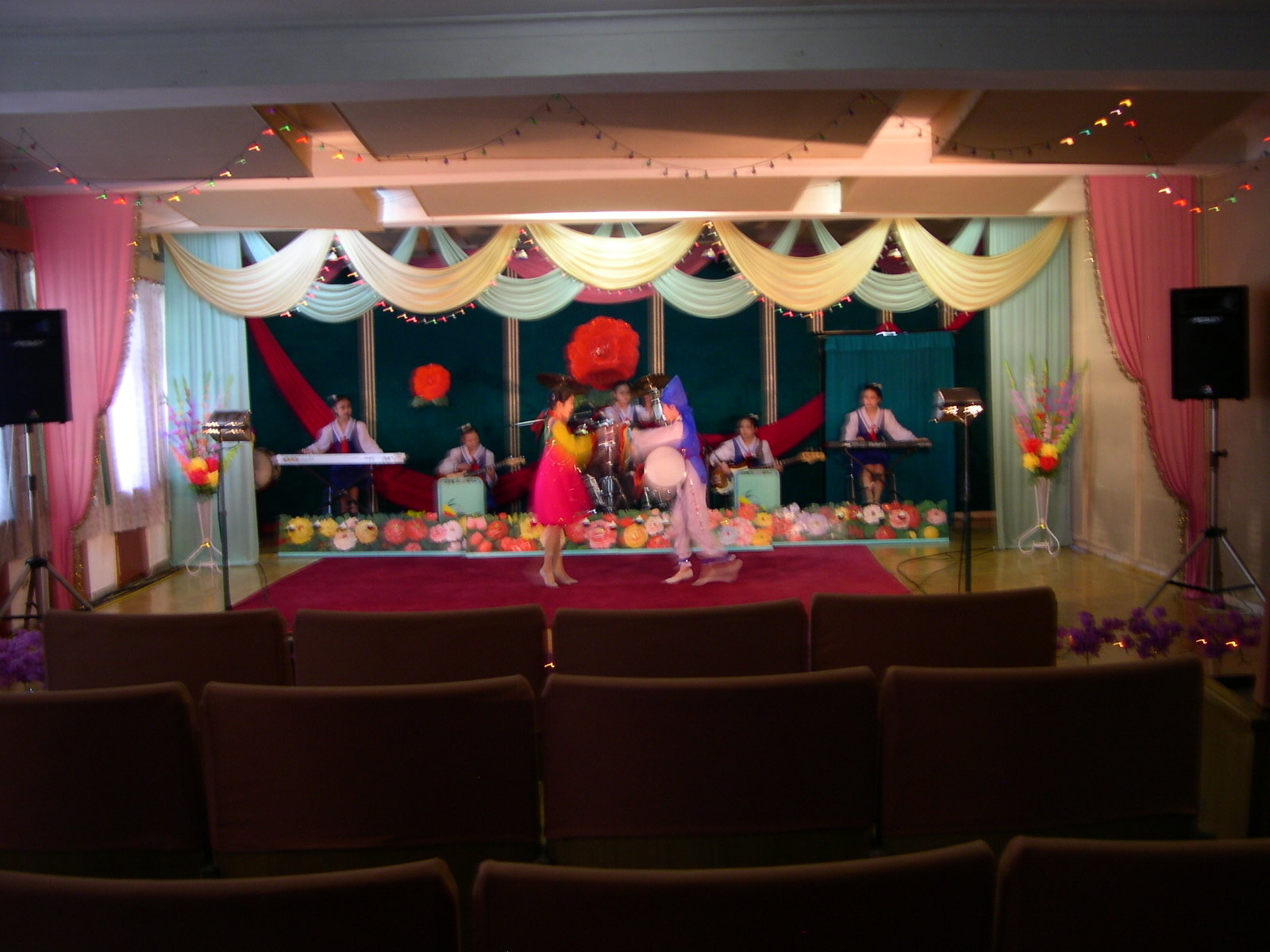
Dance performance.
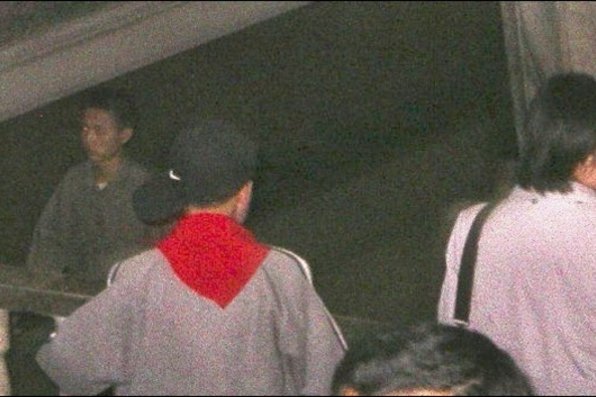
Boy heading into subway wearing school uniform including red bandana but with baseball cap backwards and a Nike swoosh. At the time Hecker thought “where there is swoosh, there is hope.”
